

The Art Post Blog | Art and Artists Italian Blog
Venice biennale 2023: tickets, pavilions, collateral events.
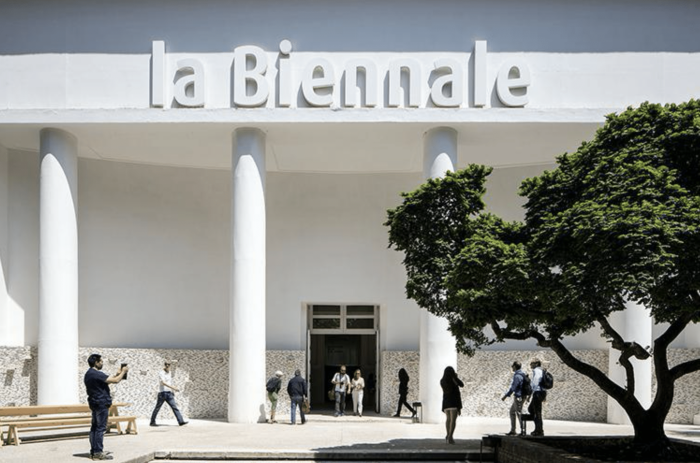
If you are looking for information on the Venice Biennale 2023, tickets, pavilions, collateral events, you are in the right place. In this post, constantly updated, there is everything you need to know about visiting the Venice Biennale 2023.
The Biennale 2023 is dedicated, as it is every two years, to Architecture and allows us to discover new trends. Last year, in 2022, the Biennale focused on Art, while this year it is Architecture in all its forms that is the protagonist. I’m ready to dive into the vortex of possibilities offered by this 18th edition, and you?
VENICE BIENNALE 2023 TICKETS, PAVILIONS, SIDE EVENTS
Here is what you need to know about tickets for the Venice Biennale 2023 , what you need to see, where to go and which side events are worth visiting.
Last updated 10 June 2023 – SPECIAL TICKETS FOR THE BIENNALE
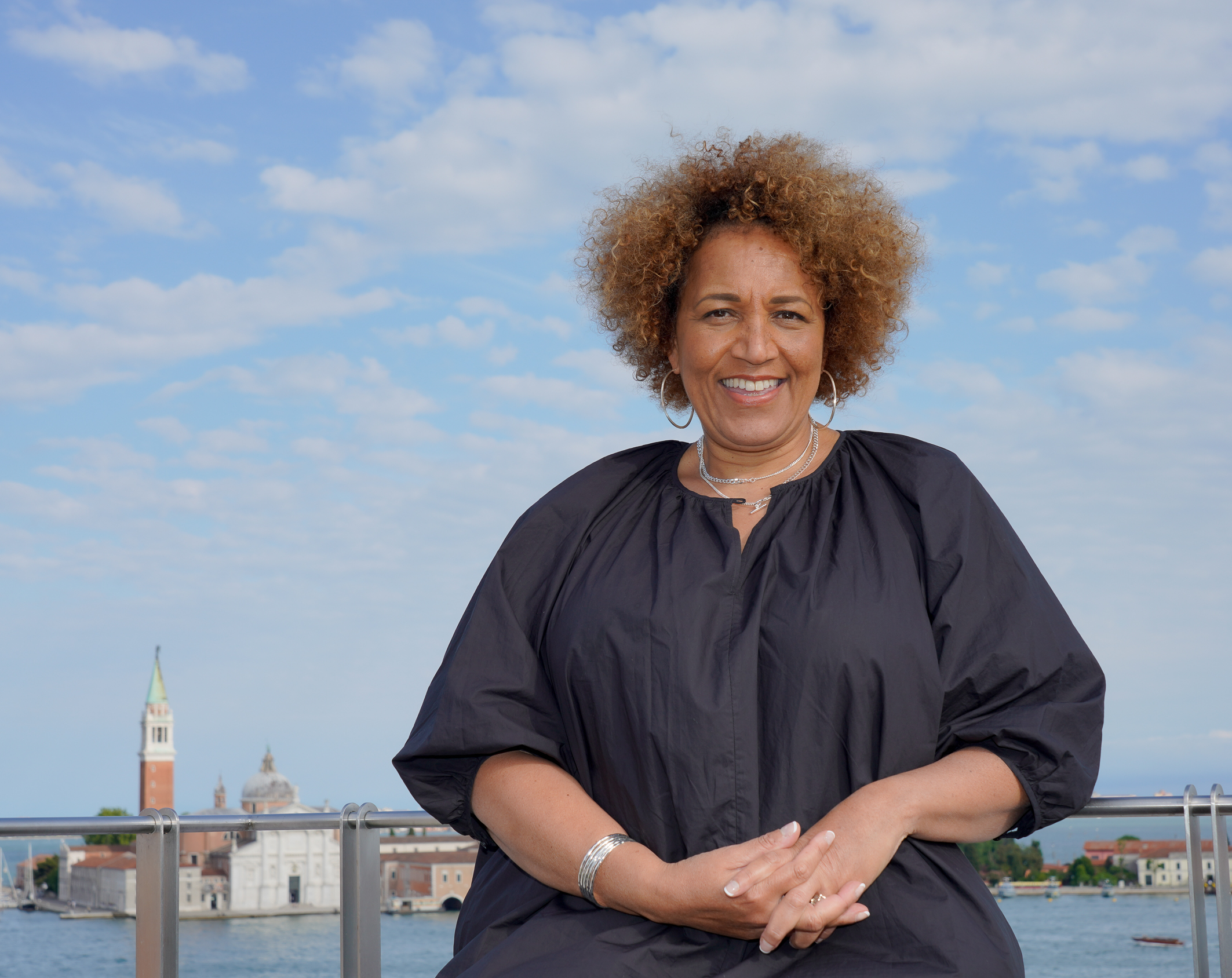
Lesley Lokko. Photo Andrea Avezzu. Courtesy La Biennale di Venezia
INFORMATION, TIMES AND TICKETS TO SEE THE BIENNALE (UPDATE 4 MAY 2023)
The Venice Biennale, from 20 May to 26 November 2023, takes place in two different exhibition venues, one located at the Giardini and the other at the Arsenale, while collateral events are held throughout the city.
Before arriving in Venice you must have already booked your entrance ticket, as TICKETS AND GUIDED TOURS ARE ONLY SOLD ONLINE.
Opening hours Biennale Venice 2023
Hours from 20 May to 30 September: 11 am – 7 pm (last admission: 6.45 pm) Until 30 September, Arsenale venue only: Friday and Saturday extended opening until 8 pm (last admission: 7.45 pm)
Hours from 1 October to 26 November: 10 am – 6 pm (last admission: 5.45 pm) Closed Mondays
Special openings: Mondays 22 May, 14 August, 4 September, 16 October, 30 October, 20 November 2023
SPECIAL TICKETS FOR THE BIENNALE 2023 (UPDATE 10 JUNE 2023)
The possibilities for visiting the Venice Biennale 2023 are many, depending on the needs of each visitor. Besides the simple ticket, therefore, there are other options. Here are which ones:
Group tickets (min. 10 – max. 25 persons). Attention! The maximum number of visitors per group is 25 people. For very large groups (more than 50 participants) it will be possible to pay in one lump sum by writing to [email protected], but it will be necessary to arrange admission for small groups of no more than max. 25 participants. Purchase on the official website –> Group tickets
Pluringresso tickets. Valid for multiple entries to the Giardini and Arsenale venues depending on the type chosen. These tickets are strictly personal with verification at the entrance of a valid identity document.
- 3-day ticket. Valid for three consecutive days – excluding closing days. Purchase on the official website –> 3-day ticket
- Weekly ticket. Valid for 7 consecutive days – closing days excluded. Purchase on the official website –> Weekly Ticket
- Accreditation ticket. The accreditation is a type of ticket valid for multiple entries to both venues depending on the type chosen. It allows you to enter the Exhibition several times during its duration and also during the same day. Accreditation is strictly personal with verification at the entrance of a valid identity document. Purchase on the official website –> Ticket accreditation
COLLATERAL EVENTS ( UPDATE 24 MAY 2023)
There are a total of nine collateral events at the 18th. International Architecture Exhibition and, as always, they are organised in numerous venues throughout the city of Venice.
Here is the complete list of collateral events and the venues where they take place.
A Fragile Correspondence – Scotland + Venice Docks Cantieri Cucchini, San Pietro di Castello 40 May 20 – November 26, 2023 Organizing Institution: Scotland + Venice
Catalonia in Venice_ Following the Fish Docks Cantieri Cucchini, San Pietro di Castello 40A May 20 – November 26, 2023 Organizing Institution: Institut Ramon Llull
Climate Wunderkammer IUAV Palazzo Badoer ground floor – Calle de la Laca, San Polo 2468 May 20 – November 26, 2023 Organizing Institution: RWTH Aachen University
Diachronic Apparatuses of Taiwan Architecture as on-going details within landscape Palazzo delle Prigioni, Castello 4209 May 20 – November 26, 2023 Organizing Institution: National Taiwan Museum of Fine Arts
EUmies Awards. Young Talent 2023. The Laboratory of Education Palazzo Mora, Cannaregio 3659 May 20 – November 26, 2023 Organizing Institution: Fundació Mies van der Rohe
Radical yet possible future space solutions May 25, 2023 at IUAV Ca’ Tron, Santa Croce 1957 May 26, 2023 at IUAV aula magna Tolentini, Santa Croce 191 Organizing Institution: New European Bauhaus, Joint Research Centre of the European Commission
Students as Researchers: Creative Practice and University Education Centro Studi e Documentazione della Cultura Armena, Dorsoduro 1602 May 20 – November 26, 2023 Organizing Institution: New York Institute of Technology
Transformative Hong Kong Campo della Tana, Castello 2126 May 20 – November 26, 2023 Organizing Institution: Hong Kong Arts Development Council + The Hong Kong Institute of Architects Biennale Foundation
Tracé Bleu Que faire en ce lieu, à moins que l’on y songe? Campiello Santa Maria Nova 6024 May 20 – November 26, 2023 Organizing Institution: CA’ ASI
HOW TO VISIT THE BIENNALE 2023 (UPDATE 20 MAY 2023)
The 18th. Venice Architecture Biennale is an exhibition divided into six parts. Before you begin your visit, there are a few details you need to know in order to understand how and by whom the projects that are part of the exhibition were realised.
The Biennale 2023 comprises 89 Participants , all genders are equally represented and more than half of those who participate are from Africa or the African diaspora. The average age of the participants is 43, while it drops to 37 in the Curator’s Special Projects section, where the youngest is 24. For the first time ever, almost half of the architects are from one-man studios or studios with a maximum of five people. In all sections of the exhibition, more than 70% of the exhibited works were designed by studios run by an individual or a very small team.
At the heart of each project is imagination because, according to the curator, it is impossible to build a better world if you don’t imagine it first. The exhibition as a whole revolves around two main themes: decolonisation and decarbonisation, providing a snapshot of future practices and ways of seeing and being in the world.
The tour begins at the Central Pavilion in the Gardens , where 16 studios representing a concentration of African and diasporic architectural production are assembled.
Second part of the visit: we move to the Arsenale, where we find the Dangerous Liaisons section, flanked by the Curator’s Special Projects, which for the first time is as broad a category as the others.
During the visit, one will often come across the term ‘practitioner’, used to define the participants in this Biennale 2023. This is a choice made by the curator, who expressly wanted to avoid terms such as ‘architects’, ‘urban planners’, ‘designers’, ‘landscape architects’, ‘engineers’ or ‘academics’, because she felt that the dense and complex conditions of Africa and a rapidly hybridising world require a different and broader understanding of the term ‘architect’.
NATIONAL PARTICIPATIONS
There are 64 National Participations that, as always, have organised their exhibitions in the Pavilions at the Giardini (there are 27 in total), at the Arsenale (there are 22 in total) and in the historic centre of Venice (there are 14 in total).
Niger is taking part in the Architecture Biennale for the first time; Panama is presenting itself for the first time, in the past participating as I.I.L.A. (International Italo-Latin American Organisation). The Holy See’s participation in the Architecture Biennale returns, with its own Pavilion on the Island of San Giorgio Maggiore (it had participated in the Architecture Biennale for the first time in 2018).
The Italian Pavilion at the Tese delle Vergini in the Arsenale, has the title SPAZIALE: Ognuno appartiene a tutti gli altri. For the first time, a curatorial group made up of architects born between 1987 and 1989 brings to Venice the instances of a new generation of designers under 40, who have grown up and formed themselves in a scenario of permanent crisis: the cultural crisis of the West triggered by 11 September 2001, the economic crisis of 2007-2008, the health crisis brought about by the Covid-19 pandemic, the energy and geopolitical crisis caused by the war in Ukraine and the ecological crisis of tomorrow. This generation of designers, which, compared to previous generations, has grown up in a regime of scarcity of resources and opportunities, and which experiences the issue of sustainability as crucial, presents its proposals for the future.
MEETINGS, CONFERENCES, PERFORMANCES OF THE BIENNIAL 2023 ( UPDATE 5 MAY 2023)
The 18th. Venice Architecture Biennale is enriched by Carnival, a cycle of meetings, conferences, round tables, films and performances that will take place during the six months of the exhibition. The aim is to explore the themes of the Biennale Architettura 2023. Here are the most important appointments.
Monday, 17 July 2023 | Sala delle Colonne, Ca’ Giustinian New Architecture Writers: Learning from Venice
Tuesday, 29 August 2023 | Teatro Piccolo Arsenale The Future of Research into African Architectural and Urban History
Thursday, 31 August 2023 | Teatro Piccolo Arsenale Governing, Designing and Educating Urban Futures
Tuesday, 26 September 2023, Wednesday, 27 September 2023, Thursday, 28 September 2023 | Arsenale e Teatro Piccolo Carnival Film Screenings
Tuesday, 3 October 2023, Wednesday, 4 October 2023 | Arsenale e Teatro Piccolo Women, Life, Freedom!
Tuesday, 21 November 2023 | Arsenale e Teatro Piccolo Inconvenient Truths
To find out about the entire programme and stay up-to-date on events and any changes, it is best to check the official website of the Architecture Biennale 2023: www.labiennale.org
THE DATES OF THE VENICE BIENNALE 2023 (UPDATE 4 MAY 2023)
The 18th. Architecture Biennale runs from 20 May to 26 November 2023 and is entitled ‘The Laboratory of the Future’. This edition is curated by architect, architecture lecturer and writer Lesley Lokko , who explained the significance of this edition as follows:
“In addition to the desire to tell a story, issues of production, resources and representation are central to the way an architectural exhibition comes into the world, yet they are rarely acknowledged and discussed. It was clear from the outset that The Laboratory of the Future would adopt the concept of ‘change’ as its essential gesture.
INFO 18. Mostra Internazionale di Architettura – Biennale Venezia 2023
Biennale Arte 2023 The Laboratory of the Future Edited by Lesley Lokko
Venice (Arsenale e Giardini) 20 may – 26 november 2023 (pre-opening 18 and 19 May)
Exhibition venues Giardini / Arsenale
OFFICIAL HASHTAGS #BiennaleArte2023 #TheLaboratoryoftheFuture
Leave a Reply Cancel reply
Your email address will not be published. Required fields are marked *
Save my name, email, and website in this browser for the next time I comment.
- Hispanoamérica
- Work at ArchDaily
- Terms of Use
- Privacy Policy
- Cookie Policy
- Architecture News
Meet the Full List of the 63 National Pavilions at the 2023 Venice Architecture Biennale

- Written by Nicolás Valencia
- Published on May 17, 2023
Titled The Laboratory of the Future and curated by Lesley Lokko, the 2023 Venice Architecture Biennale will be holding the 18° International Architecture Exhibition from May 20 to November 26, 2023.
The 2023 edition of the Biennale will include 63 national participants allocated in the Giardini, at the Arsenale, and in the historic city center of Venice, Italy. Additionally, the exhibition will welcome Niger for the first time, along with Panama, which will have its own pavilion. The Holy See will also return to the Biennale Architettura with a pavilion on the island of San Giorgio Maggiore.
Please find below the full list of national participants at the 2023 Venice Architecture Biennale.
Albania: Untimely Meditations or: How We learn to live in synthesized realities
Commissioner: Elva Margariti, Minister of Culture of the Republic of Albania Curators: heramarte (Era Merkuri, Martin Gjoleka) Exhibitors: heramarte (Martin Gjoleka, Era Merkuri) with Ani Marku and Geraldo Prendush Venue: Arsenale
Argentina: El Futuro del Agua
Commissioner: Paula Vázquez Curator: Diego Arraigada Venue: Arsenale
Australia: U nsettling Queenstown
Commissioner: Janet Holmes à Court AC Curators: Ali Gumillya Baker, Anthony Coupe, Emily Paech, Julian Worrall, Sarah Rhodes Venue: Giardini
Austria: Participation / Beteiligung
Commissioner: The Arts and Culture Division of the Federal Ministry for Art, Culture, the Civil Service and Sport of Austria Curators/Exhibitors: AKT (Fabian Antosch, Gerhard Flora, Max Hebel, Adrian Judt, Julia Klaus, Lena Kohlmayr, Philipp Krummel, Gudrun Landl, Lukas Lederer, Susanne Mariacher, Christian Mörtl, Philipp Oberthaler, Charlie Rauchs, Helene Schauer, Kathrin Schelling, Philipp Stern and Harald Trapp), Hermann Czech Venue: Giardini
Bahrain: Sweating Assets
Commissioner: Shaikh Khalifa bin Ahmad Al Khalifa, Bahrain Authority for Culture & Antiquities Curators: Maryam Aljomairi, Latifa Alkhayat Venue: Arsenale
Belgium: In Vivo
Commissioner: Fédération Wallonie-Bruxelles Curators/Exhibitors: Bento et Vinciane Despret Venue: Giardini
Brazil: Terra
Commissioner: José Olympio da Veiga Pereira Curators: Gabriela de Matos, Paulo Tavares Venue: Giardini
Bulgaria: Education is the movement from darkness to light
Commissioner: Alexander Staynov Curator: Boris Tikvarski Venue: Sala del Tiziano
Canada: Not for Sale!
Commissioner: Canada Council for the Arts Curators: Architects Against Housing Alienation (AAHA) Venue: Giardini
Chile: Moving Ecologies
Commissioner: Cristobal Molina Baeza Curators: Gonzalo Carrasco + Beals Lyon Arquitectos (Loreto Lyon, Alejandro Beals) Venue: Arsenale
China: Renewal: a symbiotic narrative
Commissioner: China Arts and Entertainment Group Ltd Curator: Ruan Xing Venue: Arsenale
Croatia: Same as it ever was
Commissioner: Ministry of Culture and Media of the Republic of Croatia Curators: Mia Roth, Tonči Čerina Venue: Arsenale
Cyprus: From KHIROKITIA to MARS
Commissioner: Petros Dymiotis, Cultural Officer at the Cultural Services of the Deputy Ministry of Culture Curators/Exhibitors: Petros Lapithis, Lia Lapithi, Nikos Kouroussis, loanna loannou Xiari, Cyprus Space Exploration Organization Venue: Associazione Culturale Spiazzi
Czech: The Office for a Non-Precarious Future
Commissioner: Helena Huber-Doudová Venue: Arsenale and Giardini
Denmark: Coastal Imaginaries
Commissioner: Kent Martinussen, Danish Architecture Centre Curator: Josephine Michau Venue: Giardini
Egypt: NiLab - The Nile as Laboratory
Commissioner: Ministero della Cultura Egiziano- Accademia d'Egitto- National Organization for Urban Harmony Curators/Exhibitors: Ahmed Sami Abd Elrahman, Marina Tornatora, Ottavio Amaro, Ghada Farouk, Moataz Samir Venue: Giardini
Estonia: Home Stage
Commissioner: Raul Järg Curators/Exhibitors: Aet Ader, Mari Möldre and Arvi Anderson Venue: Castello 96
Finland: Huussi, Imagining the future history of sanitation
Commissioner: Katarina Siltavuori, Archinfo – Information Centre for Finnish Architecture Curator: Arja Renell, The Dry Collective Venue: Giardini
France: Ball Theater / La fête n’est pas finie
Commissioner: Institut français with the Ministry of Europe and Foreign Affairs and the Ministry of Culture Curators: Muoto & Georgi Stanishev Venue: Giardini
Georgia: January, February, March
Commissioner: Magda Guruli Curators: Tbilisi Architecture Biennial (Gigi Shukakidze, Tinatin Gurgenidze, Otar Nemsadze) Venue: Il Giardino Bianco Art Space
Germany: Open for Maintenance – Wegen Umbau geöffnet
Commissioner: Federal Ministry for Housing, Urban Development and Building Curators: ARCH+ / SUMMACUMFEMMER / BÜRO JULIANE GREB (Anne Femmer, Franziska Gödicke, Juliane Greb, Christian Hiller, Petter Krag, Melissa Makele, Anh-Linh Ngo, Florian Summa) Venue: Giardini
Luxembourg: Down to Earth
Commissioner: Kultur | lx - Arts Council Luxembourg and Luca — Luxembourg Center for Architecture, on behalf of the Ministry of Culture Curators: Francelle Cane, Marija Marić Venue: Arsenale
Great Britain: Dancing Before the Moon
Commissioner: Sevra Davis, Director of Architecture Design Fashion at the British Council Curators: Jayden Ali, Joseph Henry, Meneesha Kellay, and Sumitra Upham Venue: Giardini
Greece: Bodies of water
Commissioner: Efthimios Bakoyannis, Segretario Generale della Pianificazione Territoriale e dell'Ambiente Urbano Curators: Costis Paniyiris and Andreas Nikolovgenis Venue: Giardini
Grenada: Walking on Water
Commissioner: Susan Mains Curators: Luisa Flora Venue: Associazione Vela al Terzo Venezia, Fondamenta C.Giazzo
Holy See: Social Friendship: meeting in the garden
Commissioner: Cardinale José Tolentino de Mendonça, Prefetto del Dicastero per la Cultura e l’Educazione della Santa Sede Curator: Roberto Cremascoli Venue: Abbazia di San Giorgio Maggiore, Venezia
Hungary: Reziduum – The Frequency of Architecture
Commissioner: Julia Fabényi, director Ludwig Museum – Museum of Contemporary Art, Budapest Curator: Mária Kondor-Szilágyi Venue: Giardini
Ireland: In Search of Hy-Brasil
Commissioner: Culture Ireland Curators: Peter Cody, Peter Carroll, Elizabeth Hatz, Mary Laheen, Joseph Mackey Venue: Arsenale
Israel: Cloud-to-Ground
Commissioners: Michael Gov, Arad Turgeman Curator: Oren Eldar, Edith Kofsky, Hadas Maor Venue: Giardini
Italy: SPAZIALE: Everyone Belongs to Everyone Else
Commissioner: Onofrio Cutaia, Direzione Generale Creatività Contemporanea del Ministero della Cultura Curators: Fosbury Architecture Venue: Arsenale
Japan: Architecture, a place to be loved — when architecture is seen as a living creature
Commissioner: The Japan Foundation Curator: Onishi Maki Venue: Giardini
South Korea: 2086: Together How?
Commissioner: Arts Council Korea Curators: Soik Jung, Kyong Park Venue: Giardini
Kosovo: rks² transcendent locality
Commissioner: Dafina Morina Venue: Arsenale
Kuwait: Rethinking Rethinking Kuwait
Commissioner: Abdulaziz Al-Mazeedi Curators: Hamad Alkhaleefi, Naser Ashour, Jassim Alshehab, Mohammad Kassem Venue: Magazzino del Sale 5
Latvia: T/C LATVIJA (TCL)
Commissioner: Jānis Dripe (Ministry of Culture of the Republic of Latvia) Curators: Ernests Cerbulis, Uldis Jaunzems-Pētersons Venue: Arsenale
Lithuania: Children's Forest Pavilion
Commissioner: Ines Weizman Curators: Jurga Daubaraitė, Egija Inzule, Jonas Žukauskas Venue: Campo della Tana
Mexico: Utopian Infrastructure: The Campesino Basketball Court
Commissioner: Diego E. Sapién Muñoz, Instituto Nacional de Bellas Artes y Literatura Curators/Exhibitors: APRDELESP and Mariana Botey Venue: Arsenale
Montenegro: Mirages of the Future (MNE)
Commissioner: Vladan Stevović Curator: Zoran Lazovic Venue: Palazzo Malipiero
Netherlands: Waterworks
Commissioner: Aric Chen,Het Nieuwe lnstituut Curator: Jan Jongert / Superuse Studios Venue: Giardini
Niger: ARCHIFUSION
Commissioner: Ibrahim Souleymane Curator: Boris Brollo Venue: San Servolo island
Nordic Countries (Sweden, Norway, Finland): Joar Nango - Girjegumpi: The Sámi Architecture Library
Commissioners: Kieran Long, ArkDes- The Swedish Centre for Architecture and Design, Stina Høgkvist, The National Museum of Norway; Carina Jaatinen, The Museum of Finnish Architecture Curators: Carlos Mínguez Carrasco (ArkDes), James Taylor-Foster (ArkDes) Venue: Giardini
North Macedonia: Stories of the Summer School of Architecture in the St. Joakim Osogovski Monastery 1992 - 2017
Commissioner: Dita Starova Kjerimi, National Gallery of Macedonia Curators: Dimitar Krsteski, Aleksandar Petanovski, Darko Draganovski, Marija Petrova, Gordan Petrov Venue: Scuola dei Laneri
Panama: Stories from Beneath the Water
Commissioner: Itzela Quirós Curator: Aimée Lam Tunon Venue: Tana Art Space
Peru: Walkers in Amazonia
Commissioner: José Orrego Curators: Alexia León, Lucho Marcial Venue: Arsenale
Philippines: Guts of Estuary
Commissioner: Victorino Mapa Manalo, Chairman National Commission for Culture and the Arts (NCCA) Curators: Sam Domingo and Ar. Choie Y. Funk Venue: Arsenale
Poland: Datament
Commissioner: Janusz Janowski Curator: Jacek Sosnowski Venue: Giardini
Portugal: FERTILE FUTURES
Commissioner: Américo Rodrigues, Direção-Geral das Artes Curator: Andreia Garcia Venue: Palazzo Franchetti
Romania: NOW, HERE, THERE
Commissioner: Attila Kim Curators: Emil Ivănescu, Simina Filat, Cătălin Berescu and Anca Păsărin Venue: Giardini and New Gallery of Istituto Romeno di Cultura e Ricerca Umanistica
San Marino: OSPITE OSPITANTE
Commissioner: Riccardo Varini; Curators: Michael Kaethler and Marco Pierini Scientific Committee: Corrado Petrocelli, Elena Brigi, Shaul Bassi, Domenico Luciani, Ralf Petersen, Massimo Renno, Michele Savorgnano, Andreas Sicklinger, Riccardo Varini, Massimo Brignoni, Vincenzo Rotondo Venue: Calle San Lorenzo 5063b
Saudi Arabia: Irth ارث (Legacy)
Commissioner: Architecture and Design Commission, Ministry of Culture Curators: Basma Bouzo, Noura Bouzo Venue: Arsenale
Serbia: IN REFLECTIONS 6°27’48.81”N 3°14’49.20”E
Commissioner: Slobodan Jović Scientific Commitee: Biljana Jotić (President), Dubravka Đukanović, Jelena Ivanović Vojvodić, Miljana Zeković, Snežana Vesnić, Ana Đurić, Jelena Mitrović Venue: Giardini
Singapore: WHEN IS ENOUGH, ENOUGH? The Performance of Measurement
Commissioner: Yap Lay Bee, Group Director (Architecture & Urban Design), Urban Redevelopment Authority; Dawn Lim, Executive Director, DesignSingapore Council Curators: Melvin Tan, Adrian Lai, Wong Ker How Venue: Arsenale
Slovenia: +/- 1 °C: In Search of Well-Tempered Architecture
Commissioner: Maja Vardjan, Museum of Architecture and Design Curators: Jure Grohar, Eva Gusel, Maša Mertelj, Anja Vidic, Matic Vrabič Venue: Arsenale
South Africa: The Structure of a People
Commissioner: Ambassador Nosipho Nausca-Jean Jezile Curators: Sechaba Maape, Emmanuel Nkambule and Stephen Steyn Venue: Arsenale
Spain: FOODSCAPES
Commissioner: MITMA (Ministry of Transport, Mobility and Urban Agenda), AECID (Spanish Agency for International Development Cooperation) AC/E (Acción Cultural Española) Curators: Eduardo Castillo-Vinuesa + Manuel Ocaña del Valle Venue: Giardini
Switzerland: Neighbours
Commissioners: Swiss arts council Pro Helvetia: Sandi Paucic, Rachele Giudici Legittimo Curators/Exhibitors: Karin Sander, Philip Ursprung Venue: Giardini
Turkiye (formerly known as Turkey): Ghost Stories: Carrier Bag Theory of Architecture
Commissioner: Istanbul Foundation for Culture and Arts (İKSV) Curators: SO? (Sevince Bayrak, Oral Göktaş) Venue: Arsenale
Ukraine: Before the Future
Commissioner: Mariana Oleskiv, State Agency for Tourism Development of Ukraine Curators: Iryna Miroshnykova, Oleksii Petrov, Borys Filonenko Venue: Arsenale
United Arab Emirates: Aridly Abundant
Commissioner: Salama bint Hamdan Al Nahyan Foundation Curator: Faysal Tabbarah Venue: Arsenale
United States: Everlasting Plastics
Commissioner: Tizziana Baldenebro, SPACES Curators: Tizziana Baldenebro, Lauren Leving Venue: Giardini
Uruguay: En Ópera. Escenarios futuros de una joven Ley Forestal
Commissioner: Facundo de Almeida Curators: Mauricio López, Matías Carballal, Andrés Gobba, Sebastián Lambert and Carlos Casacuberta Venue: Giardini
Uzbekistan: Unbuild Together
Commissioner: Art and Culture Development Foundation Curators: Studio Ko Venue: Arsenale
Venezuela: Universidad Central de Venezuela, Patrimonio de la Humanidad en recuperación. Ciudad Universitaria de Caracas.
Commissioner/Curator: Paola Claudia Posani Venue: Giardini
Editor's Note: The information displayed about each pavilion here has been officially provided by the organization.
We invite you to check out ArchDaily's comprehensive coverage of the 2023 Venice Architecture Biennale.

- Sustainability
想阅读文章的中文版本吗?

2023 威尼斯建筑双年展,63 个国家馆策展人名单
You've started following your first account, did you know.
You'll now receive updates based on what you follow! Personalize your stream and start following your favorite authors, offices and users.
• make your fridays matter with a well-read weekend

- Books & Movies
- Conversations
- View Listings
- Submit Entries
- STIRpad.com

Venice Architecture Biennale 2023: Everything you need to know
by Eleonora Ghedini Published on : May 02, 2023 Updated on : May 19, 2023
The contemporary architectural field is a kaleidoscope of narratives and practices that requires widely open boundaries between disciplines, as well as between cultures: this is one of the key elements emerging through the words pronounced by curator Lesley Lokko while finally presenting the program of The Laboratory of the Future , the 18 th International Architecture Exhibition – La Biennale di Venezia, whose emblematic title comes from Richard Sennett's theory of laboratory as a space to make ideas before objects.

Curatorial Approach
As previously introduced during the first press conference, the focus of Biennale Architettura 2023 is Africa or the African Diaspora. In fact, among the 89 participants in the main exhibition, over half of them have their roots in the continent. This includes Adjaye Associates ; atelier masōmī ; Cave_bureau ; Kéré Architecture ; Sumayya Vally and Moad Musbahi; Theaster Gates Studio ; Neri&Hu Design and Research Office ; Rahul Mehrotra with Ranjit Hoskote ; SCAPE Landscape Architecture; Studio Barnes , to name a few. However, compared to what was anticipated the past year, Lokko emphasises a substantial difference: this edition cannot be 'only one story, but multiple stories.' If the concept of 'hybridisation' was already one of the leading topics—although from completely different points of view—characterising the last edition of Venice Art Biennale , curated by Cecilia Alemani , this time it refers more specifically to the increased permeability between fields of research and geographical identities. The urgency of a plural vision of architecture confirms the end of a Eurocentric perspective, as well as of any past nostalgia. This is particularly visible in the demographics of the participants, which have a gender balance of 50/50, and an average age of 43, dropping to 37 in the Curator's Special Projects, where the youngest is 24. Forty six per cent of participants count education as a form of practice, and, for the first time ever, nearly half of the participants are from sole or individual practices or have a very small team. The Laboratory of the Future can only look forward and invest in a design culture that embraces everyone and not just an elitist minority, differently from some outdated western examples that often express unrealistic visions of the discipline—such as those proposed from Italian Futurism, just to make an example that also affected, even if indirectly, the city of Venice .

The traditional definition of an architect itself is now obsolete—it is even more evident that the power of words lies in the terms we choose, as Lokko demonstrates by preferring the term 'practitioner' to 'architect.' Taking inspiration from a quote by the great Russian poet Anna Akhmatova (1889-1966), Lokko believes the “guests from the future” are already among us, we only need adequate sensitivity to recognise them, and Guests from the Future is also one of the titles the curator chose for the sections constituting the main exhibition. Another significant statement is that no better future can be built without innovating the education field—for this reason, the Biennale College Architecture call was first launched and faced an extraordinary response, owing to the 986 applications received from all over the world. Another interesting facet will be Carnival , a program of events that will be open to the public during the exhibition, an ideal connection between Venetian tradition and the African diaspora, that will promote a space of freedom as well as discussion.

Special Projects
Lokko, whose range of interests and references have always been distinctively eclectic, demonstrated quite a playful approach towards sections' titles. The main focus on Africa and its diaspora is concentrated inside the Central Pavilion at Giardini, almost in open contrast with its classicist silhouette surrounded by greenery: Force Majeure already announces itself as a joyfully disrupting section. On the other side, the spaces of the Venetian Arsenale and Forte Marghera, near Mestre, will be crossed by the Dangerous Liaisons imagined by Lokko, where the concept of 'hybridisation' will be investigated more in detail. For the first time ever, a Special Projects section will be also presented.

National Pavilions
Other noteworthy exhibits will be Dancing Before The Moon in the British Pavillion, in Giardini, which is an exploration of the concept of intangibility in architecture and deconstructs the idea of the built environment . Commissioned by Sevra Davis, the director of Architecture Design Fashion At The British Council and curated by Jayden Ali, Joseph Henry, Meneesha Kellay, and Sumitra Upham, the pavilion will feature Yussef Agbo-Ola, Jayden Ali, Mac Collins, Shawanda Corbett, Madhav Kidao and Sandra Poulson. Archifusion in the Niger Pavillion, which is commissioned by Ibrahim Souleymane and curated by Boris Brollo at the Isola Di San Servolo. Neighbours in the Switzerland Pavillion at Giardini, commissioned by the Swiss Arts Council Pro Helvetia: Sandi Paucic, Rachele Giudici Legittimo, curated by Karin Sande and exhibiting Philip Ursprung. Before The Future in the Ukraine Pavilion, commissioned by Mariana Oleskiv, State Agency For Tourism Development of Ukraine, curated by Iryna Miroshnykova, Oleksii Petrov, Borys Filonenko, exhibiting architects, artists, writers, cultural workers, and others at the Arsenale.

Aridly Abundant in the United Arab Emirates Pavilion, commissioned by Salama Bint Hamdan Al Nahyan Foundation, and curated by Faysal Tabbarah in the Arsenale. Everlasting Plastics by the USA Pavilion, commissioned by Tizziana Baldenebro, Spaces, curated by Tizziana Baldenebro, Lauren Leving and exhibiting Xavi Aguirre, Simon Anton, Ang Li, Norman Teague, and Lauren Yeager at the Giardini. Coastal Imaginaries by the Denmark Pavilion, commissioned by Kent Martinussen, Danish Architecture Centre, curated by Josephine Michau and exhibiting Schønherr Landscape Architects, David Garcia, Giacomo Brusa Cattaneo, Laurits Sporon Bøving Genz, Dejle Zaradesht Mohamad, Iisa Eikaas, Katrina Wiberg, Anna Aslaug Lund and Christian Friedländer at the Giardini.

Visual Identity
A special mention should be made about the visual identity of The Laboratory of the Future , created by Die Ateljee—Fred Swart. The posters will soon cover and illuminate the streets and the canals of Venice, will be like windows that open on geographies that we probably can not even remotely delineate, far away from the stereotypes characterising African traditions in Western imagery, which are still sometimes reinforced by current trends in art and fashion . An unusual palette for the European gaze, but not for people living in Western Africa, more specifically Ghana , the country of Lokko’s identity and belonging—a scale of brown, red, blue, green and even lilac shades are chosen as backgrounds for the black silhouettes, where mercury-looking Venice lions emerge. An ode to innovation and youth, an ideal bridge between the past and future, it gently reminds us that architecture should not be a story about the prevailing as opposed to the marginal, but a participatory dialogue based on equity.

Venice Architecture Biennale 2023 is open from May 20 to November 26, 2023.
STIR heralds Venice Architecture Biennale 2023’s zealous crusade for an inclusive, equitable and sustainable future! Explore 'The Laboratory of the Future' and the expositions hosted across various national pavilions—Ireland, Ukraine, Canada, Denmark and more—with our exclusive interviews, visits, and analyses.
- Lesley Lokko
- Venice Architecture Biennale
- Venice Architecture Biennale 2023
- Venice Biennale
What do you think?
Advocates of change: revisiting creatively charged, stirring events of 2023.
by Jincy Iype Dec 31, 2023
The counter-gaze of the African diaspora at Venice Architecture Biennale 2023
by Ayesha Adonais Jun 23, 2023
About Author

Eleonora Ghedini
Eleonora is an art historian based in Venice. During her contemporary art history studies at Ca’ Foscari University she specialized in the relation between textile, art and design, while mostly focusing on North European and Baltic cultures. Eleonora has a certificate in Curatorial Studies and co-curated the exhibition Non Playable Character (NPC) at “Pier Fortunato Calvi” State First Grade Secondary School, Venice, in 2022, for which she wrote the concept. She is also deeply interested in illustration and publishing and has collaborated with ATPdiary.
Recommended
Annibale Siconolfi on building cities and worlds that contemplate humanity’s future
by Jerry Elengical Apr 11, 2024
In a conversation with STIR, the artist and architect dives into his creative process, influences, and the prescient tendencies of revolutionary science fiction works.

Sjöparken by Norm Architects indulges in tranquillity and communion with nature
by Jincy Iype Apr 09, 2024
Norm Architects draws from Nordic simplicity, the timelessness of Japanese design, and the tropical allure of resort living for this ‘sanctuary of understated luxury’ in Sweden.

von Bartha Copenhagen director Mamie Beth Cary on the gallery's journey
by Zeynep Rekkali Jensen Apr 09, 2024
In an exclusive interview with STIR, Mamie Beth Cary unveils the restoration and creative integration at the iconic Lime Tower.

A measured twist on modernism: Alta Tower by Hamonic + Masson & Associés
by STIRworld Apr 08, 2024
This twirling apartment block of concrete and glass in Le Havre, France, pays homage to the local work of modernists Oscar Niemeyer and Auguste Perret.

make your fridays matter
make your fridays matter with a well-read weekend
Exclusive preview for subscribers. Learn More
Make your fridays matter. Learn More
Try searching for
- STIRfri Exclusive
- STIRring Conversations
- Contemporary Art
- Art Exhibition
- Interior Design
- Contemporary Architecture
- STIR At Milan Design Week 2024
Don't have an account?
Or you can sign in with
Please confirm your email address and we'll send you a link to reset your password
Already have an account?
a single account for all STIR platforms
- Engage, track and save content on STIRworld
- Connect with brands, designers, and galleries on STIRpad
- Free subscription to STIRfri – the weekly newsletter
All your bookmarks will be available across all your devices.
Stay STIRred
Password must be 8 characters long including one capital letter, one digit, and one special character (!@#$%^&).
Your preferences will help us serve you better in the future.
By creating an account, you acknowledge and agree to the Terms of Use and Privacy Policy by STIR.
Or you can sign up with
Your preferences have been successfully saved to your profile.
Please select your profession for an enhanced experience.
Tap on things that interests you.

Navigating a route 'Back to the Future' with Hunnarshala Foundation Mar 08, 2024 by Almas Sadique Mar 08, 2024 Exploring Neeraj Patel’s articulations of tech and industry at Nature Morte Feb 05, 2024 by Manu Sharma Feb 05, 2024 Shanghai Book City is a cultural odyssey of light, knowledge and inclusion Mar 25, 2024 by Pooja Suresh Hollannavar Mar 25, 2024 Imagining enhanced 'Futures of the Architectural Exhibition' Jan 25, 2024 by Almas Sadique Jan 25, 2024 Speaking with Asim Waqif on transforming public spaces via architectural interventions Feb 25, 2024 by Vasudhaa Narayanan Feb 25, 2024 5550,5459,5592,5428,5512 Don’t like what you see? STIR it up! Share Using Conversation Categories
Select the Conversation Category you would like to watch
Please enter your details and click submit.
Enter the code sent to
Verify your email
Enter the 6-digit code sent at
Single account access for STIRworld.com, STIRpad.com and exclusive STIRfri content.

Don’t have an account? SIGN UP
Verification link sent to check your inbox or spam folder to complete sign up process

An Insider's Guide to the Venice Biennale
Three days in the floating city.
This world-renowned event has helped consolidate Venice’s reputation as one of the leading cities for contemporary art and culture in Europe. The Venice Biennale runs from May to November each year and alternates between art and architecture exhibitions. Attracting half a million visitors, it hosts up to 90 countries in the historic Pavilions scattered across the city. It is considered one of the most prestigious cultural institutions and is responsible for the organisation of the annual Venice Film Festival and Contemporary Music Festival.
Celebrating groundbreaking artists and pioneering architecture, the Biennale reflects on topical issues in world politics, society and contemporary culture. Each year, the committee sets an overarching theme that contributing countries must respond to, establishing a relationship, however minute, between diverse curatorial visions.
The Venice Biennale is divided across multiple sites around the city. This guide offers advice on how best to maximise your time between the Arsenale, Giardini and outlying pavilions, as well as a brief history of the institution and our favourite time to visit.

The Arsenale: Photo by Giulio Squillacciotti (Courtesy La Biennale di Venezia)
125 years of art
Established in 1895, the Venice Biennale was the first of its kind and has been at the forefront of the international art world ever since. Initially housed in the Napoleonic gardens of the Giardini, Belgium was the first country to open a national pavilion in 1907, followed shortly after by Great Britain, Germany and Hungary in 1909.
In the 1930s new festivals in music, cinema and theatre were brought to life. The world’s first Film Festival was founded in Venice in 1932, which still draws famous film stars and directors to the city.
The Biennale has long been a world stage for landmark events, revealing Japanese and Indian cinema to the west for the first time and showcasing major works by the likes of Kusama, Modigliani and Klimt. In 1909 Marinetti dropped his manifesto from the campanile in the Piazza San Marco, giving rise to Italian Futurism.
Peggy Guggenheim displayed her modern art collection in 1948, marking the first appearance outside of the USA of a new generation of American painters, including Jackson Pollock and Mark Rothko. In under twenty years time Pop Art would arrive in Europe with Robert Rauchenberg, marking a shift in the contemporary art scene to America. And in 1993 Hans Haacke made history by smashing the floor of the German Pavilion, built by Hitler in 1938, to pieces.
The Biennale was expanded to the Arsenale in 1980 before spilling out across the rest of the city. The former naval shipyard of the Venetian Republic now hosts 23 national pavilions, including countries like Italy, China, South Africa and Mexico. 125 years after the first exhibition was held at the Giardini, the prestigious institution is still growing: Ghana, Madagascar, Malaysia and Pakistan participated for the first time in 2019.
The best time to visit the Venice Biennale
In late August, early September the most successful directors and actors descend upon the red carpet at Lido di Venezia for the Venice Film Festival , upholding the glamorous status of the city. If you can handle Venice when it’s busy and love cinema, many of the film screenings are open to the public, providing a great opportunity to combine two world-famous events.
The Festival for Contemporary Music runs later in September, early October , which is not only our favourite time to visit the biennale , it is also one of the best times to experience Venice as a whole. There tends to be a lull in the number of tourists between the height of summer and Christmas and the temperatures are cool and comfortable without being too cold. A month or so before the Biennale ends, the exhibition spaces are far less busy as well. Enjoy the art or architecture installations at the Giardini by day, followed by dinner at Al Covo and a concert at the Teatro Piccolo at the Arsenale come the evening. Music lovers can take advantage of the fixed subscription ticket which allows entry to five concerts.
Three days in Venice
To appreciate the two main venues at the Biennale, we recommend taking two days to explore each site. It is possible to do both in a day if you are organised, but don’t expect to see everything and be sure to arrive at the Arsenale promptly upon opening at 10 a.m. Bear in mind that both sites close at 6 p.m. and tickets are only valid for one entry.
That being said, your tickets don’t have to be used immediately — if you are staying in one of our luxury villas near Venice or Verona you could spread these trips out over a week or two. The great thing about the pavilions around the city as well is that these are almost always free to enter so you can make an appearance at any time.
Day 1 at the Venice Biennale: The Giardini
There is an overwhelming amount to see at the Biennale so it is always best to check the programme and read pavilion reviews before you visit to see what piques your interest most. If you only have one day in Venice, the Giardini is the smaller and more accessible of the two sites.
If you are visiting in September or October, wake early and venture into Saint Mark’s Square to watch the sunrise. It is our favourite time of day to experience this iconic cathedral when the Piazza is empty of people. Reserve a table for breakfast at one of the luxury hotels on the Grand Canal or stop for coffee on the Riva dei Setti Martiri before arriving at the Giardini for 10 a.m. Both venues have a main exhibition hall or central pavilion, which is the best place to start. Venture over the bridge to the Padiglione Venezia before making your way around the national pavilions scattered around the park.
The geometric cafe designed by Tobias Rehberger is a good place to stop for a quick bite if you have limited time, alternatively, try one of the bacari along the Via Giuseppe Garibaldi. For something more memorable, take the vaporetto to the Accademia and enjoy a late lunch at the Enoteca Ai Artisti .
If you have time, end the day exploring the contemporary art collection divided between the Palazzo Grassi and Punta Della Dogana .

The Giardini: Photo by Francesco Galli (Courtesy La Biennale di Venezia)
Day 2 at the Venice Biennale: The Arsenale
Start your visit in the central pavilion, housed in the Arsenale’s Corderie before exploring the installations of South Africa, Peru, Argentina and the UAE in the Sale D’Armi. The site here is vast and this approach will save you continually having to walk back on yourself. There is also a good cafe once you reach the far end, which is ideal for a light lunch after spending all morning on your feet.
Castello is the largest and furthermost district in Venice so it’s a good idea to prioritise any pavilions in this area if you have time after visiting the Arsenale. Many of the pop-up spaces and collateral events change location each year. For example, in 2019 the Lithuanian Pavilion was held in the nearby Marina Militare, which still belongs to the Arsenal's military zone. A beach was curated inside where holidaymakers sang opera-style performances throughout the day.
There is no better way to wind down in the evening than with an Aperol Spritz on the Riva degli Schiavoni whilst the sun sets over the Giudecca and lagoon beyond.
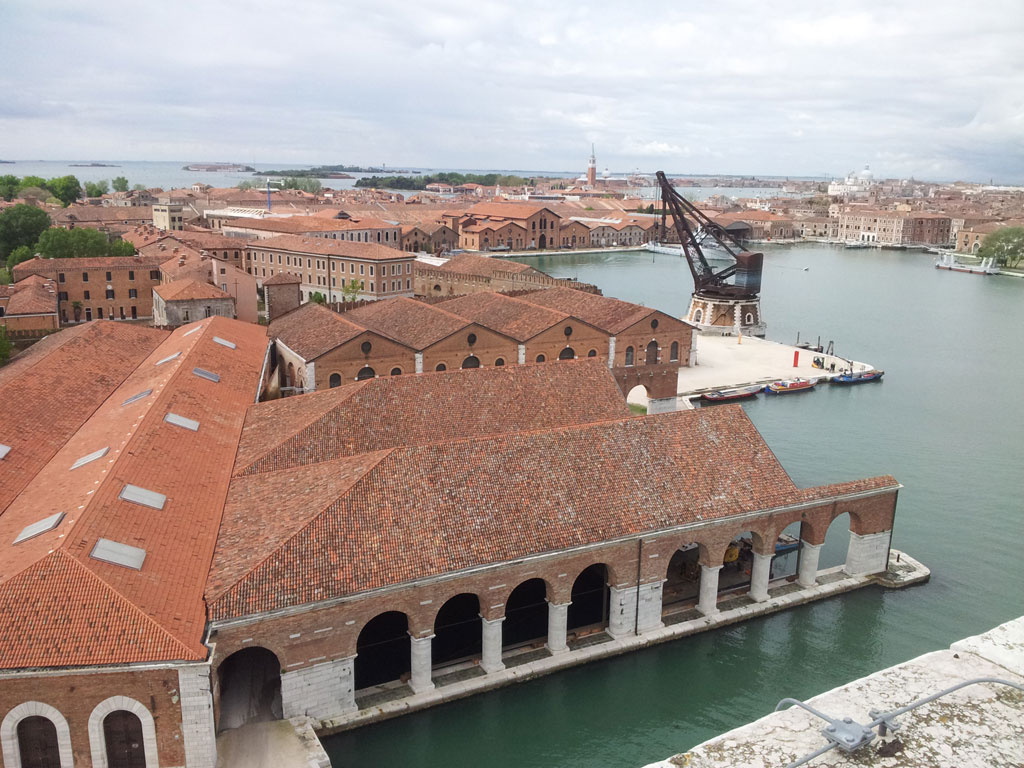
The Arsenale: Photo by Andrea Avezzù (Courtesy La Biennale di Venezia)
Day 3 at the Venice Biennale: The pavilions around Venice
Each year the biennale hosts a number of collateral events which take place throughout the city in the many museums, palazzi and commercial galleries. Teamed with the many national pavilions held across Venice, there is an overwhelming variety of exhibitions to visit. Start in Santa Croce and Cannaregio before taking the vaporetto across to Dorsoduro and finishing with dinner in San Polo.
Since there is so much happening in the city, don’t be surprised if you stumble across events and exhibitions you haven’t heard of before. These sometimes are the best places for a quick detour, especially if they are anything like the Icelandic Pavilion on the Giudecca in 2019. The impressive multisensory installation, “ Chromo Sapiens ”, formed a labyrinth from brightly coloured, fuzzy, synthetic hair.
Recurring venues that are used as exhibition spaces as part of the biennale include the Palazzo Mora and Ca D’Oro in Cannaregio and the Palazzo Cavalli-Franchetti overlooking the Ponte dell'Accademia. If you have time, visit the Fondazione Prada’s contemporary exhibition space at the Ca’ Corner della Regina , which also houses the Biennale’s historical archive.
Due to the ongoing Covid-19 pandemic, the next Art Biennale has been suspended until 2022. The 59th International Art Exhibition will take place from 23rd April to the 27th November and is curated by Cecilia Alemani, the first Italian woman to ever hold the position. In a year that has seen great social and political upheaval, it may be one of the most important biennale’s of our time, so why not plan your trip now .
Book your luxury villa holiday
All experiences are exclusively available to you when you book a luxury villa in Italy with Tuscany Now & More. Too add on any enriching extras, contact our local Villa Specialists to share your villa shortlist and secure your stay.
(*)Please read this before completing any of our enquiry forms. The information you provide is to facilitate our response to your enquiry, a brochure request or to make a booking. Click here for our Web Privacy Statement for the full details of how your information may be stored and used.
By submitting your information, you agree that Tuscany Now & More may contact you via email or phone with commercial and informational purposes.
There is an option to discontinue direct communication and to do this simply click on this link [email protected] and follow instructions. All payments for bookings are done via a link having a Secure Sockets Layer (SSL) protocol. No information regarding credit card or debit card details is held by us.
Subscribe to our newsletter
Receive your Free ‟Tuscany in 10 Minutes Guide”
We respect your privacy. Learn how we handle your details in our Privacy Policy.
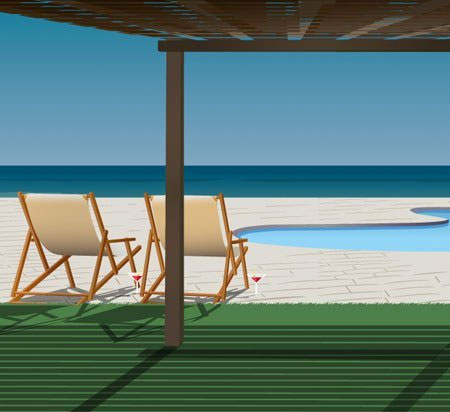
Keep in touch with Tuscany Now & More
- International edition
- Australia edition
- Europe edition

Venice Biennale 2023 review – an important challenge to western architectural tradition
Under the title The Laboratory of the Future, Lesley Lokko, the Ghanaian-Scottish curator of this year’s biennale, succeeds in her aim to show off under-represented talent from Africa and elsewhere – even if it doesn’t all quite come off
T he Venice Biennale , a grand exhibition that concentrates on art and architecture in alternate years, has been until now a Eurovision of the visual. It is held partly in a series of national pavilions in specially dedicated gardens, originally laid out before the first world war, that reflect the evolving world order of the 20th century. Britain, France and Germany are in pride of place, the United States off to one side, other European countries also prominent, plus some representation from Latin America and south-east Asia. Another part of the biennale is held in a relic of an older power structure – the Corderie, the 16th-century rope works of the city’s Arsenale, which served the fleet of what was then a dominant maritime empire.
The architecture and architects celebrated by the biennale have also been predominantly European, with some contributions from Asia and the Americas. This year’s event, called “The Laboratory of the Future”, curated by the Ghanaian-Scottish academic and novelist Lesley Lokko, sets out to give space to those previously under-represented, in particular (but not only) Africa and the African diaspora. In so doing she aims to present ways of doing architecture that are different from established western traditions, which have often drawn on both extraction of natural resources and expropriation of the wealth of others. (If you want an example, you need look no further than the famous St Mark’s Basilica, which is laden with loot seized from Constantinople in the fourth crusade in 1204.)
This general ambition includes “decarbonisation” and “decolonisation”, ways of building that are less exploitative of people and nature than in the past, or may not even involve much construction. Lokko stretches the definitions of what is usually considered architecture to include art, performance, games, activism and other ways of dwelling in physical space that are available to those deprived of the power and resources to build large permanent structures.
So you are greeted, soon after entering the Corderie, by a large screen featuring the poet Rhael “Lionheart” Cape, proclaiming that “if architecture doesn’t serve feelings it serves a psychosis”. Later on there’s a film by the London-based Gbolade Design Studio on the popularity of dominoes among the Windrush generation in south London – “dominoes people are happy people,” says one elderly devotee, the point being that you need minimal infrastructure or money, just a network of places where you can play the game.
There’s not all that much by way of conventional architectural projects, apart from a room full of assured models by David Adjaye’s practice, including the future national cathedral of Ghana and the proposed home, in Nigeria, for the repatriated Benin bronzes . Norman Foster’s prototype for emergency housing, sponsored by the construction materials company Holcim and on show outside the biennale proper, is an outlier of the prevailing spirit of youth and local knowledge.
There’s an emphasis on ways of making shelter that don’t rely on heavy construction, such as weaving or building with earth, or that make best use of existing structures. There’s a rich and intriguing room containing the work of the Catalan architects Flores and Prats, whose Sala Beckett theatre in Barcelona is a virtuoso remodelling of an old building. One of the more engaging pieces, because it is beautifully wrought, is Bengali Song , an intricate woven triptych depicting a flood-proof home, made by artisans from a collective in Bengal, in collaboration with Arinjoy Sen, a young, not-yet-qualified architect, Kolkata-born and based in London.

The national pavilions, while not directly curated by Lokko, are encouraged to follow her themes. The Nordic countries pavilion has been taken over by a collection of artefacts relating to the Sámi people – a riot of timber, reindeer hide and colour assembled by the architect and artist Joar Nango. The British pavilion, curated by Jayden Ali, Joseph Henry, Meneesha Kellay and Sumitra Upham, presents a rewarding film compilation of the lives and rituals of minorities in Britain, using recent and archival footage: a Sikh new year celebration, a hair salon in Streatham, more dominoes, 1980s anti-police protests in Bradford, Asian BMW enthusiasts in Southall. It also contains a series of more-or-less mysterious installations, including a representation in blue soap, by the Angolan artist Sandra Poulson, of everyday objects in Luanda (a cement tank, ornamental balustrades, a traditional dress). For reasons I can’t pin down, it’s arresting.
It doesn’t all come off. In places this biennale feels thin and under-resourced, which probably reflects the fact that previous iterations have had more projects by big practices, which tend to bring along additional funding. If you hoped for a burst of energy and celebration, you don’t quite get it. It suffers, as have previous biennales, from exhibits that are wilfully hard to understand, unilluminated by wordy and opaque captions – in a kind of language that architectural academe for some reason loves. In shows this big, you shouldn’t have to work so much to get to the meaning of the displays.
There’s a vague and inconclusive optimism, something that this edition also shares with previous biennales. The Latvian pavilion, actually a room in the depths of the Arsenale, offers a diverting corrective: it mocks up a convenience store where the products take the form of packets inscribed with the pious and little-changing intentions of biennale exhibits going back 20 years. They proclaim “the need to change our perception of nature and recognise that we are connected to it” or “collective examples of architecture that foster connections and understanding”. Yes, fine, but if the world faces various kinds of emergency it would be good to see proposals that are more urgent and less conjectural.

Some of the most memorable exhibits, because they are specific and concrete, are the bleakest, such as a film by a team led by the architect Alison Killing (Newcastle-born, Rotterdam-based) that documents, through satellite imagery and other material, the scale and efficient cruelty of Chinese internment camps for Uyghurs. The Congolese photographer and artist Sammy Baloji documents the Belgian exploitation of the minerals and agriculture of his land, with among other things an exquisite new model in brass and copper of a 1935 design for an exhibition hall intended to glorify colonisation. By remaking a monument to appropriation as something gorgeous, he takes possession of it on his own terms.
But, given that it’s changing the momentum and direction that the biennale has followed for more than a century, it’s inevitable that Lokko’s endeavour would be patchy in places. (And, again, because of their unwieldy scale, so are all biennales.) Ultimately she succeeds in her main aim, which is to show how the world looks to people previously given limited access to the sort of prestige and visibility that the Venice Biennale confers.
She shows worlds with a deep past, until recently denied much by way of a present, which have the chance to make direct leaps into the future. The most dazzling space in the biennale, by the architecturally trained Nigerian-American artist Olalekan Jeyifous, gives form to this hope: it’s a make-believe lounge for the All-African Protoport, surrounded by images of lush vegetation and futuristic machines, an imaginary sustainable transport network created by the collaboration of decolonised states. It is also, hopefully, a point of departure from which the Venice Biennale and similar institutions can’t turn back.
The 18th International Architecture Exhibition is open to the public until 26 November
- Venice Biennale
- The Observer
- Architecture
Comments (…)
Most viewed.
British Council UK at the Venice Biennale
Plan your visit.

British Council
The Venice Biennale (La Biennale di Venezia) takes place across two venues, the Giardini and the Arsenale, in the eastern part of Venice, Italy. The British Pavilion is located in the Giardini.
We will announce more news about the latest exhibition soon.

British Pavilion opening times
For more information on Venice Biennale venues and opening times, visit the Venice Biennale website .
From 1 April 2022, with the exception of children under 12 years of age, all ticket holders must present an EU Digital Covid Certificate, or equivalent certificate recognised by the Italian State, to access the 59th International Art Exhibition.
The 'EU Digital COVID Certificate' (EUDCC) is digital proof, valid in all EU countries, that a person has either been vaccinated against COVID-19, has recovered from COVID-19, or has received a negative test result.
For British visitors, the British Council has been informed that the NHS Covid Pass will be recognised for entry to La Biennale. Please visit the Venice Biennale website for full guidance and the most up-to-date information on entry requirements before booking.
Visitors need a ticket to enter the Venice Biennale and the British Pavilion. The price of a standard ticket is €25, with discounts available for concessions. More information and tickets are available on the Venice Biennale website .
How to get to the British Pavilion
The British Pavilion is located in the Giardini and the nearest Vaporetto stop is Giardini.
Find out more about transport, parking and the services available for visitors on the Venice Biennale website .
Accessibility
We hope you find the following information helpful but do also visit the Venice Biennale website for more details about access in the Giardini:
- the British Pavilion is accessible to wheelchairs and mobility scooter users via a lift
- we welcome guide dogs and hearing dogs at the Pavilion
- large print exhibition guides in English and Italian are available at the Pavilion, and online
- all films produced by the British Council for the Venice Biennale are captioned.

Everything you need to know about the Venice Biennale
The venice biennale.
Are you looking for a quick introduction to the worldwide famous Venice Biennale, or Biennale di Venezia, and some information to best enjoy it?
You’re in the right place!
What is the Venice Biennale?
The expression “Venice Biennale” is used mainly to describe a large-scale international contemporary art exhibition in Venice.
Until recently, the name “Venice Biennale” was used to refer both to an organization based in Venice and to its international biennial exhibition of contemporary visual arts.
To avoid confusion, in 2009 the organization changed its name to “Biennale Foundation” and the exhibition’s name to “Art Biennale”, Biennale d’Arte in Italian.
Today, the Biennale Foundation organizes:
- The Art Biennale
- The Architecture Biennale
- The Cinema Biennale
- The Dance Biennale
- The Music Biennale
- The Theatre Biennale.
The three most famous exhibitions of the Venice Biennale are the Art Biennale, the Architecture Biennale (since 1980), and the Biennale Cinema (since 1932).
Of course, the Biennale Foundation has also a beautiful website with everything related to the Foundation’s initiatives
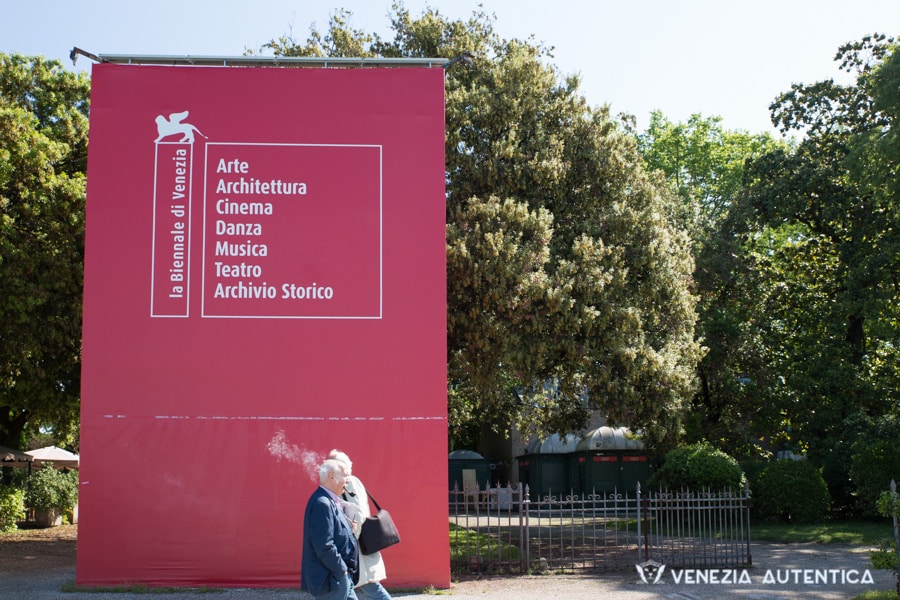
Why is the Venice Biennale so famous?
The Venice Biennale is famous worldwide because it was the first Biennale.
All other biennial exhibitions in the world have been modelled on the Venice Biennale.
Still today, the Venice Biennale is widely considered the most prestigious Biennale exhibition in the world.
How many people visit Venice Biennale every year?
Lately, each year, over 500,000 visitors have come to visit the Venice Biennale.
Want more tips, tools and stories from Venice, Italy?
We're on a mission to make it easy and fun to discover and support the authentic Venice. Try our email and see for yourself!
Thanks for signing up! If there is no e-mail in your inbox in the next hour, remember to check your spam folder and to add us to your contact list. Thank you! Get access to our live videos and even more content: like us on Facebook to add daily goodness to your feed. A presto!
Oops! We're sorry, something went wrong. We'll fix it soon. In the mean time, you can like us on Facebook to stay in touch!
By signing up you agree with Venezia Autentica's privacy policy
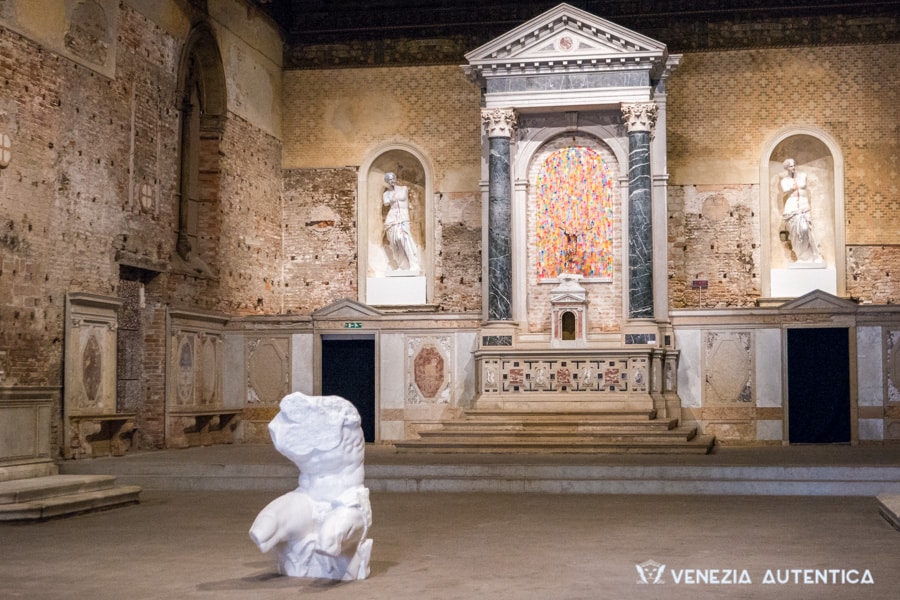
Useful Information for the Venice Biennale (dates, duration, costs, etc...)
On which year is the venice biennale.
Despite the name Biennale, which in Italian means biennial, only the Art Biennale and the Architecture Biennale are held every two years. The Venice Film Festival, the Theatre Biennale, the Music Biennale, and the Dance Biennale are held every year.
Until 2019:
- The Art Biennale in Venice used to take place in odd years (…, 2015, 2017, 2019, …)
- The Architecture Biennale in Venice used to be held in even years (…, 2014, 2016, 2018, …)
After the Covid-19 pandemic struck and forced exhibitions to halted temporarily:
- The Art Biennale in Venice will take place in even years (2022, 2024, …)
- The Architecture Biennale will be held in uneven years (2021, 2023, …)

Unlock a discount at the best local businesses in Venice
How long does the venice biennale last.
The Art Biennale and the Architecture Biennale in Venice are the two exhibitions which last the longest: over 6 months! The Venice Film Festival, the Theatre Biennale, the Music Biennale, and the Dance Biennale last from 10 days to 2 weeks.
When is the Venice Biennale?
The dates of the Art and the Architecture Biennale in Venice can change every year. In general, the Art or Architecture Biennale start in May and end at the end of November.
Similarly to these leading evens, the dates of the other Biennale in Venice can vary from year to year.
The Dance Biennale usually starts in the last week of June and ends the first days of July. It is then ‘followed’ by the Theatre Biennale which tends to begin the last week of July and ends the second week of August.
The world famous Venice Film Festival, on its hand, typically starts in the last days of August and ends the second week of September.
The last of these “yearly Biennale” is the Music Biennale which starts the last days of September and ends the second week of October.
When is the best moment to come see the Venice Biennale?
Since the Architecture and Art Biennale in Venice last over 6 months, it is possible to carefully plan when to come to Venice and check out the exhibition.
If you’re flexible and can decide when to travel, we would recommend coming either before mid-June or after mid-September. In fact, between June and August the temperatures in Venice tend to be high, the days very humid, and the city to be very crowded.
On the contrary, before mid-June, and after mid-September Venice is not as crowded and the days are not as hot and humid, making it possible to enjoy both the Venice Biennale and Venice much more!
What are the opening days and hours of the Venice Biennale?
Opening Days: The Venice Biennale is CLOSED on Mondays. In 2022, however, it will be OPEN also on 9 Mondays:
- 25th of April
- 30th of May
- 27th of June
- 25th of July
- 15th of August
- 5th of September
- 19th of September
- 31st of October
- 21st of November
Opening Hours: The Giardini area and the Arsenale area are both open from 10 AM to 6 PM
How much does a ticket for the Venice Biennale cost?
The cost for a one-entry ticket for the Art or the Architecture Biennale in Venice is 25,50 euros [2022].
One such ticket gives access both to the Giardini area and the Arsenale area. This ticket allows you to access each location only once. The sites, however, can be visited on different and non-consecutive days.
Exhibitions in Palazzos across the city and on the islands of the Lagoon have free entry.
Week cards, permanent passes, and “Biennale Cards” are also available, and can be purchased at the Venice Biennale entrance.
Where can I buy tickets for the Venice Biennale?
It is possible to buy tickets for the Venice Biennale both at the entrance and online.
You can buy your ticket from the official website of the Venice Biennale .
Besides the discount for early bird purchases, buying your ticket online allows you to avoid long queues at the ticket booths.
One-week cards and permanent passes are also available, but can only be bought at the Biennale entrance, as they require a copy of your personal ID.
Are there any discounted tickets for the Venice Biennale?
Discounted tickets for the Venice Biennale are available for Students. A small discount is also available for early-bird online purchases.
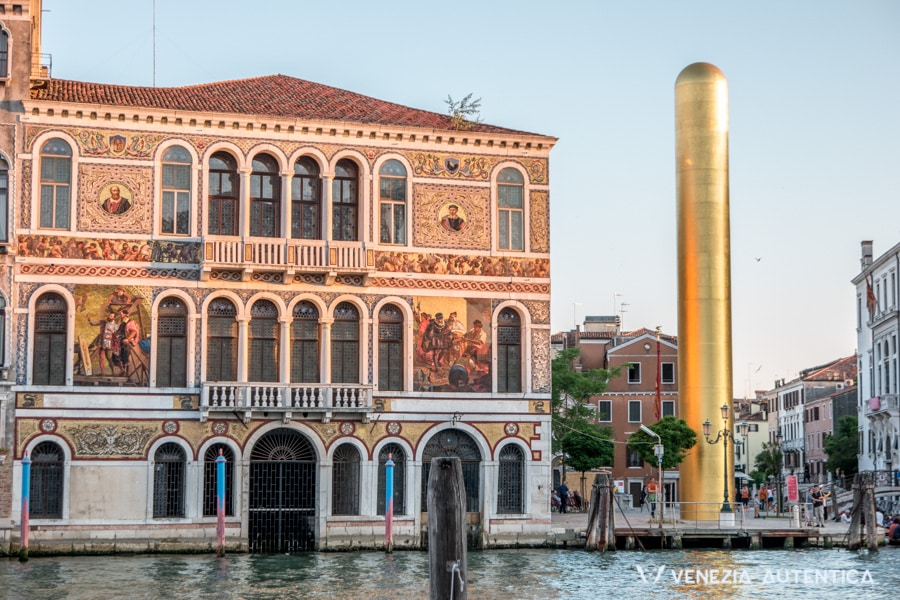
Does the Venice Biennale have a theme?
Yes, since 1973 the Art Biennale of Venice has a theme. The Architecture Biennale of Venice also has a theme since its creation in 1980.
What is the theme of the current or coming Venice Biennale?
The theme of the Venice Art Biennale 2022 is “THE MILK OF DREAMS” and is curated by Cecilia Alemani.
Regarding the exhibition, Cecilia Alemani stated “As the first Italian woman to hold this position, I intend to give voice to artists to create unique projects that reflect their visions and our society”
The 59 th International Art Exhibition of La Biennale di Venezia, titled The Milk of Dreams , will open to the public from Saturday April 23 to Sunday November 27, 2022, at the Giardini and the Arsenale; it will be curated by Cecilia Alemani and organised by La Biennale di Venezia chaired by Roberto Cicutto. The Pre-opening will take place on April 20, 21 and 22; the Awards Ceremony and Inauguration will be held on 23 April 2022.
You can watch the Venice Biennale Arte 2022 presentation here
Where in Venice is the Venice Biennale?
The main exhibition areas of the Venice Biennale are at the “Giardini” and at the “Arsenale,” two spaces slightly off the most beaten path, except for exhibition-goers, obviously. There are also many works hosted in Palazzos spread around the city and on some islands of the Venetian Lagoon.
The Giardini of the Venice Biennale:
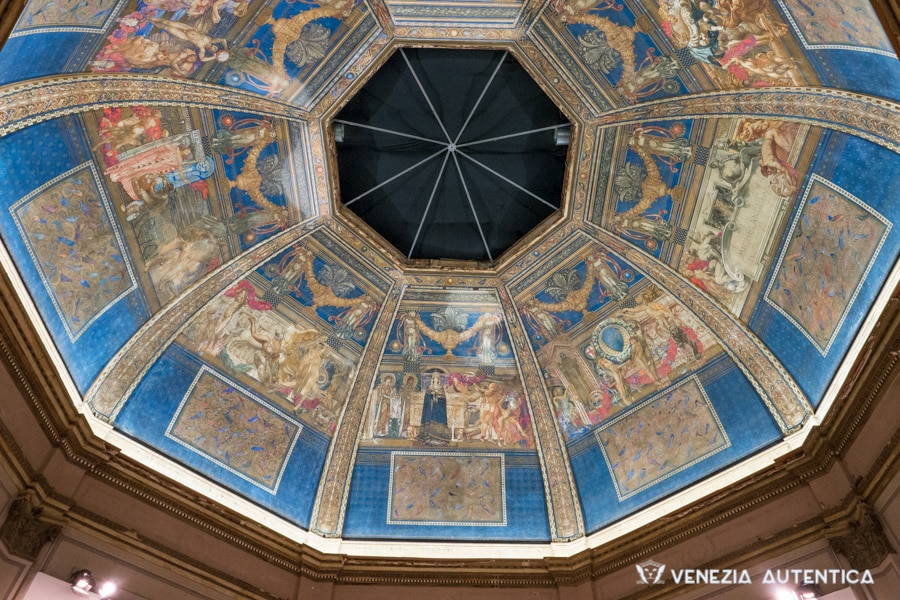
The Giardini, a park on the eastern edge of Venice, is the traditional site of the Venice Biennale since its first edition in 1895.
The Venice Biennale was initially held at the “Palazzo dell’Esposizione” which is where the Central Pavilion is located today. The growing success of the Venice Biennale led to the construction of permanent National Pavilions in this area, the first of which was built by Belgium in 1907.
Today, the Central Pavilion has become a multifunctional structure of 3,500 square meters, and the area around it counts 29 National Pavilions. The pavilions are the property of the individual countries and are managed by their Ministries of Culture.
These are the Nations which have a National Pavilion at the Giardini of the Venice Biennale: Belgium, Hungary, Germany, Great Britain, France, Netherlands, Russia, Spain, Czech Republic and Slovak Republic, United States of America, Denmark, Venice , Austria, Greece, Israel, Switzerland, Venezuela, Japan, Finland, Canada, Uruguay, Nordic Countries: Sweden, Norway, Finland, Brazil, Australia, Korea.
The Arsenale

The Arsenale, which once was the largest production center in the pre-industrial era employing up to 2,000 workers a day, is located on the North-East of Venice.
In 1980, the Arsenale opened the ‘Corderie dell’Arsenale’ and the ‘Magazzini del Sale’ which became the exhibition sites of the 1st International Architecture Exhibition of the Venice Biennale.
Since then, the Arsenale is also used for the Art Biennale.
Today, the Arsenale hosts the Venice Biennale Pavilions of 23 Nations: Albania, Argentina, Chile, People’s Republic of China, Croatia, United Arab Emirates, Philippines, Georgia, Indonesia, Ireland, Italy, Republic of Kosovo, Latvia, Former Yugoslav Republic of Macedonia, Malta, Mexico, New Zealand, Peru, Singapore, Republic of Slovenia, Republic of South Africa, Tunisia e Turkey.
Where are the pavilions of those Nations that aren't at Giardini nor at Arsenale?
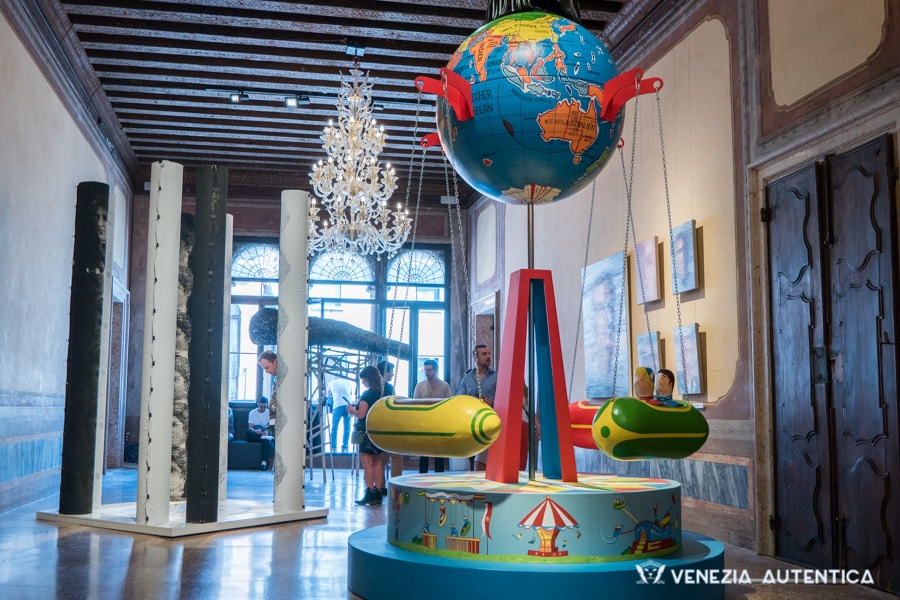
The countries not owning a pavilion in the Giardini nor at the Arsenale are exhibited in Palazzos across Venice as well as on islands of the Venetian Lagoon.
Since the locations can change every year, it is important to look on the Biennale website for information on the whereabouts of non-permanent pavilions!

Book an authentic experience in Venice

The history of the Venice Biennale:
The idea that gave birth to the Venice Biennale dates back to 1893 when the Venice City Council decided to create a biennial exhibition of Italian Art to celebrate the silver anniversary of the Italian King Umberto I and Margherita of Savoy
The first Venice Biennale, known as “Esposizione Internazionale d’Arte della Città di Venezia,” was opened on April 30, 1895, by the Italian King and Queen themselves, and attended by over 220.000 visitors.
Already at the beginning of the 20th Century, the Venice Biennale became increasingly popular and international, soon leading to the creation of permanent national pavilions.
The first National Pavilion at the Venice Biennale was created for Belgium by Leon Sneyers in 1907. By 1914, six more nations had been established permanently: Hungary, Germany, and Great Britain in 1909, France in 1912, and Russia in 1914.
Except for some rare exceptions, the international exhibition has been held every 2 years since its creation. From 1916 to 1918, and later from 1943 to 1946, however, the Venice Biennale was canceled because of the two World Wars.
In 1920, the first independent Venice Biennale President was appointed. Until then, this role was played by the Mayor of Venice.
In 1930, the Venice Biennale was transformed into an autonomous board, and in 1931 its control passed from the Venice City Council to that of the national Fascist government under Mussolini.
This change brought increased funds and led to the creations of new events such as the Music Biennale in 1930, the Biennale Venice Film Festival in 1932, and the Theatre Biennale in 1934, taking on the multidisciplinary character that the Venice Biennale has to this day.
After WWII, the Venice Biennale renewed its attention to avant-garde movements, introducing to a broader public abstract expressionism and Pop Art, as well as classical Japanese Noh theatre shows and Indian cinema.
In 1972, the Venice Biennale adopted for the first time a theme for its Art exhibition. The theme was “Work or Behaviour.”
Although Architecture works and Dance shows existed before as part of the Venice Biennale, the Foundation created the Venice Biennale dedicated to Architecture in 1980 and the one devoted to Dance in 2003.
Curiosity: Venezia Autentica at the Venice Biennale!
We have had the privileged to take an active part to the Venice Biennale 2018 by speaking at “Redesigning Tourism, an event organized by the U.S. Pavilion “Dimension of Citizenship,” for the Architecture Biennale 2018.
The objective of FREESPACE, the theme of the Architecture Biennale 2018, was to represent a generosity of spirit and a sense of humanity at the core of architecture’s agenda.
The curators of the 2018 U.S. Pavilion, Niall Atkinson, Ann Lui, and Mimi Zeiger, answered the call through “Dimensions of Citizenship” a framework created “through a series of essays digging into the meaning of citizenship and broadly position citizenship as a critical global topic helping architects and designers to envision what it means to be a citizen today”.
It was offered “for future conversations about the conditions, methodologies, and interventions of inclusion and exclusion that impact all of us” because “only when spatial understandings of citizenship—legal, cultural, and ecological—are in sight might we struggle free from antiquated definitions, forms, or bureaucracies and activate potent spaces for design.”
We were pleased to participate to the conversation around the “Dimensions of Citizenship” by taking part to the “Redesigning Tourism” conference and debate and presenting the work we do with our social business, Venezia Autentica, to make tourism a motor of local development.
We believe we provided you with all the information you need to best plan your visit for the next Venice Biennale.
What is left now for you to do is to book your flight to Venice, get your Biennale ticket, and discover what’s new in the coming Venice Biennale!
Remember to set aside enough time to enjoy Venice. Below are a few tips and tools to get you started!
I'm visiting Venice. Why should I follow your recommendations?
The way you visit Venice has an impact both on the quality of your experience and on Venice itself. Chilling, exploring , shopping , eating and drinking where the locals do, can make a huge impact both on the memories you bring home and on the local economy and community.
POPULAR POSTS LIKE THIS
- Best Places where to eat and drink like a local in Venice
- Interactive map of the best authentic local businesses and places where to eat & drink in Venice
- Why eating and drinking at authentic local businesses matters
Liked this article? Don’t forget to share the love!
Home >> Visiting Venice >> Tips and Inspiration >> You’re Here
Tips and Inspiration to experience Venice
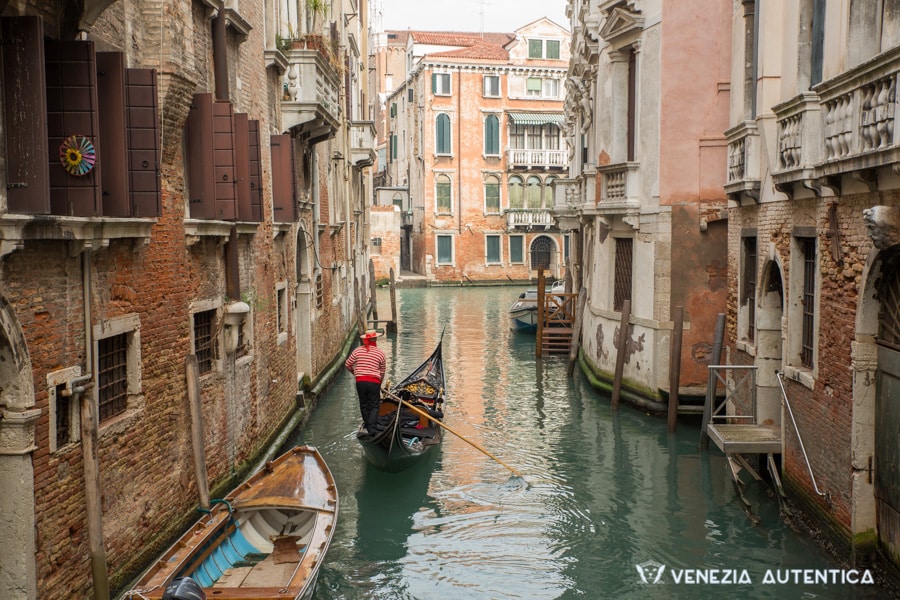
Want to go on a gondola ride in Venice? Here’s everything you need to know!
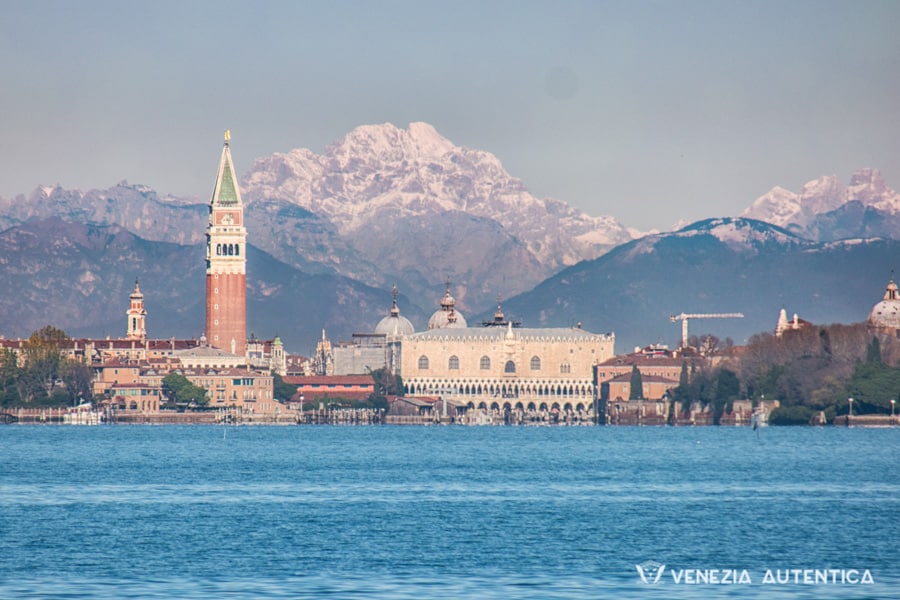
How’s the weather in Venice, Italy? We’ve got you covered!
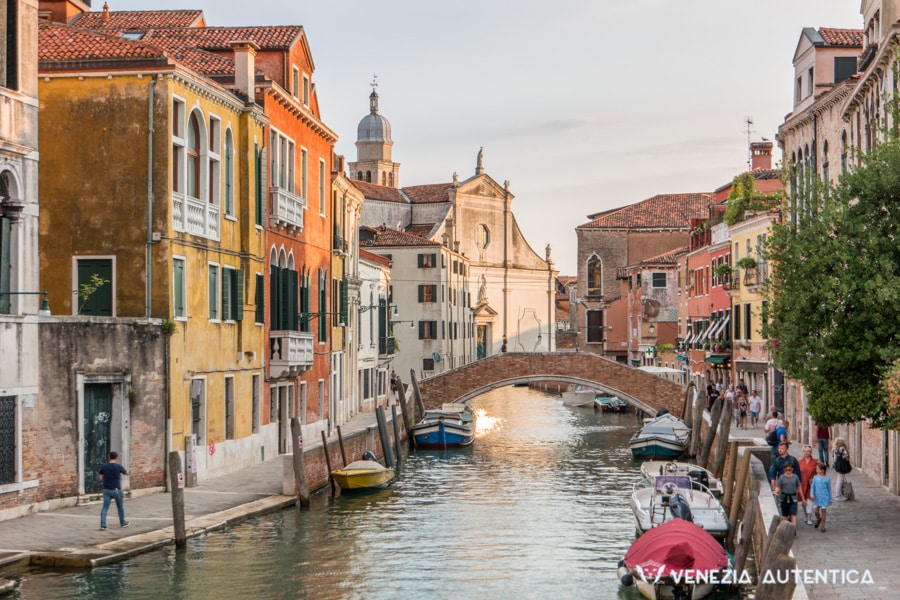
The ultimate guide to the top 10 things to do and see in Venice, Italy
More in Visiting Venice
Go to Visiting Venice >>
- January 19, 2022
You might also like
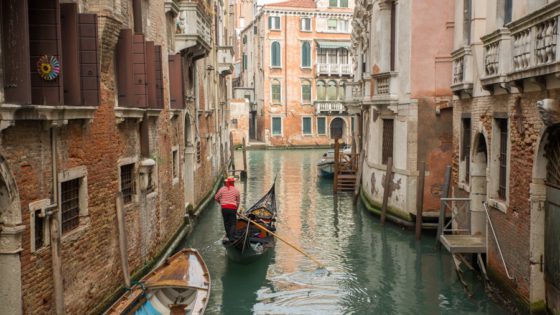
Want to go on a gondola ride in Venice? Here’s everything you need to know!
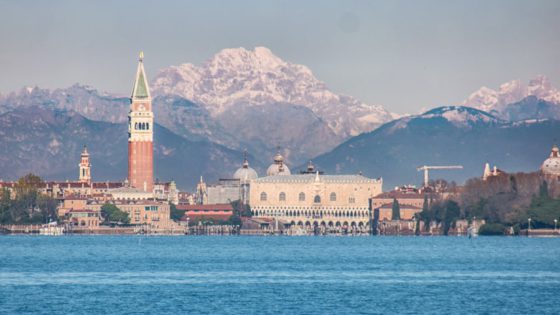
How’s the weather in Venice, Italy? We’ve got you covered!

- ONLY PRIVATE TOURS AND ACTIVITIES
We make it easy to experience Venice with local guides and experts
- 100% GUARANTEED LOCAL AND IMPACTFUL
Looking for things to do in Venice? Experience Venice with a local!
We’d love to chat.
Let us know
how we can help
For an optimal view of our website, please rotate your tablet horizontally.
- ART DESTINATIONS
- EN DE ES Search
- Free Newsletter
Venice Architecture Biennale 2023
18th international architecture exhibition, la biennale di venezia.
20 May - 26 November 2023
Title: The Laboratory of the Future
Curator: Lesley Lokko
List of Participants
Curator’s Special Projects
64 National Participations
9 official collateral events
Award winners
Practical information
Photos and information

Lesley Lokko © Photo: Jacopo Salvi. Courtesy La Biennale di Venezia
The 18th International Architecture Exhibition, titled The Laboratory of the Future , is curated by Lesley Lokko (Ghana/Scotland), a renowned architectural academic, educator and best-selling novelist. ( see biography )
Taking place from 20 May to 26 November 2023 at the Giardini, the Arsenale, and Forte Marghera, it will be the first major exhibition in this discipline to test in the field the process to achieve carbon neutrality, while furthermore reflecting upon the themes of decolonisation and decarbonisation .
The International Exhibition as Agent Of Change
“What does it mean to be ‘an agent of change’? (…) Over the past nine months, in hundreds of conversations, text messages, Zoom calls and meetings,” stated Lesley Lokko, “the question of whether exhibitions of this scale — both in terms of carbon and cost — are justified, has surfaced time and again. In May last year, I referred to the exhibition several times as ‘a story’, a narrative unfolding in space. Today, my understanding has changed. An architecture exhibition is both a moment and a process. It borrows its structure and format from art exhibitions, but it differs from art in critical ways which often go unnoticed. Aside from the desire to tell a story, questions of production, resources and representation are central to the way an architecture exhibition comes into the world, yet are rarely acknowledged or discussed. From the outset, it was clear that the essential gesture of The Laboratory of the Future would be ‘change’.”
“(…) For the first time ever, the spotlight has fallen on Africa and the African Diaspora, that fluid and enmeshed culture of people of African descent that now straddles the globe. What do we wish to say? How will what we say change anything? And, perhaps most importantly of all, how will what we say interact with and infuse what ‘others’ say, so that the exhibition is not a single story, but multiple stories that reflect the vexing, gorgeous kaleidoscope of ideas, contexts, aspirations, and meanings that is every voice responding to the issues of its time?”
“It is often said that culture is the sum total of the stories we tell ourselves, about ourselves. Whilst it is true, what is missing in the statement is any acknowledgement of who the ‘we’ in question is. In architecture particularly, the dominant voice has historically been a singular, exclusive voice, whose reach and power ignores huge swathes of humanity — financially, creatively, conceptually — as though we have been listening and speaking in one tongue only. The ‘story’ of architecture is therefore incomplete. Not wrong, but incomplete. It is in this context particularly that exhibitions matter.” – (see complete statement )
Exhibition Structure
“ The Laboratory of the Future is an exhibition in six parts. It includes 89 participants, over half of whom are from Africa or the African Diaspora. The gender balance is 50/50, and the average age of all participants is 43, dropping to 37 in the Curator’s Special Projects , where the youngest is 24 (see the list of participants ). 46% of participants count education as a form of practice, and, for the first time ever, nearly half of participants are from sole or individual practices of five people or less. Across all the parts of The Laboratory of the Future , over 70% of exhibits are by practices run by an individual or a very small team. (…)”
“Central to all the projects is the primacy and potency of one tool: the imagination - Lokko said. It is impossible to build a better world if one cannot first imagine it. The Laboratory of the Future begins in the Central Pavilion in the Giardini, where 16 practices who represent a distilled force majeure of African and Diasporic architectural production have been gathered. It moves to the Arsenale complex, where participants in the Dangerous Liaisons section – also represented in Forte Marghera in Mestre - rub shoulders with the Curator’s Special Projects , for the first time a category that is as large as the others. Threaded through and amongst the works in both venues are young African and Diasporan practitioners, our Guests from the Future , whose work engages directly with the twin themes of this exhibition, decolonisation and decarbonisation, providing a snapshot, a glimpse of future practices and ways of seeing and being in the world. (…) We have deliberately chosen to frame participants as ‘practitioners’ – the Curator stated – and not ‘architects’ and/or ‘urbanists’, ‘designers’, ‘landscape architects’, ‘engineers’ or ‘academics’ because it is our contention that the rich, complex conditions of both Africa and a rapidly hybridising world call for a different and broader understanding of the term ‘architect’. (see complete statement )
Carnival (Events)
The Laboratory of the Future programme is enriched by Carnival , a six-month-long cycle of events, lectures, panel discussions, films, and performances, that explore the themes of the Biennale Architettura 2023.
“Conceived as a space of liberation rather than a spectacle or entertainment, Carnival offers a space for communication in which words, views, perspectives, and opinions are traded, heard, analysed, and remembered – Lokko said. Politicians, policymakers, poets, filmmakers, documentary makers, writers, activists, community organisers and public intellectuals will share the stage with architects, academics, and students. This public event programme is increasingly a form of architectural practice that attempts to bridge the gulf between architects and the public.”
National Participations
64 National Participations will organize their exhibitions in the historic Pavilions at the Giardini (27), at the Arsenale (22) and in the city centre of Venice (14). Niger participates for the first time at the Biennale Architettura; Panama participates for the first time with its own pavilion and has already participated in previous editions as part of the I.I.L.A. (Italo-Latin American International Organization).
The Holy See returns to the Biennale Architettura, participating with its own Pavilion on the Island of San Giorgio Maggiore (it participated in the Biennale Architettura for the first time in 2018).
The Italian Pavilion at the Tese delle Vergini in the Arsenale, sponsored and promoted by the Directorate-General for Contemporary Creativity of the Ministry of Culture, is curated by the Fosbury Architecture collective, consisting of Giacomo Ardesio, Alessandro Bonizzoni, Nicola Campri, Veronica Caprino, Claudia Mainardi. The title of the exhibition is SPAZIALE: Everyone Belongs to Everyone Else .
See the 64 National Participations
(From press information, La Biennale di Venezia)
Special Feature by UiU:

United Arab Emirates
With the exhibition "Aridly Abundant," curator Faysal Tabbarah proposes to explore the relationship between architecture and arid landscapes in the UAE, and reimagine them as spaces of abundance and productivity.
Awards - 18th International Architecture Exhibition
see also the photos
Golden Lion for the best National Participation: Brazil Terra [Earth] Commissioner: José Olympio da Veiga Pereira, president of the Fundação Bienal de São Paulo Curators: Gabriela de Matos and Paulo Tavares Exhibitors: Ana Flávia Magalhães Pinto, Ayrson Heráclito, Day Rodrigues with the collaboration of Vilma Patrícia Santana Silva, Fissura collective, Ilê Axé Iyá Nassô Oká (Casa Branca do Engenho Velho), Juliana Vicente, Mbya-Guarani Indigenous People, Tukano, Arawak and Maku Indigenous Peoples, Tecelãs do Alaká (Ilê Axé Opô Afonjá), Thierry Oussou, Vídeo nas Aldeias Venue: Giardini
Special mention for a National Participation: Great Britain Dancing Before the Moon Commissioner: Sevra Davis, Director of Architecture Design Fashion at the British Council Curators: Jayden Ali, Joseph Henry, Meneesha Kellay and Sumitra Upham Exhibitors: Yussef Agbo-Ola, Jayden Ali, Mac Collins, Shawanda Corbett, Madhav Kidao, Sandra Poulson Venue: Giardini
Golden Lion for the best participant in the 18th Exhibition The Laboratory of the Future : DAAR Alessandro Petti and Sandi Hilal (Stockholm; Bethlehem) Dangerous Liaisons section Venue: Corderie, Arsenale
Silver Lion for a promising young participant in the 18th Exhibition The Laboratory of the Future : Olalekan Jeyifous (Brooklyn, USA) Olalekan Jeyifous: * 1977 Ibadan, Nigeria Venue: Central Pavilion, Giardini
Three special mentions:
Twenty Nine Studio / Sammy Baloji (Brussels, Belgium) Sammy Baloji: * 1978 Lubumbashi, Democratic Republic of the Congo Dangerous Liaisons section Venue: Corderie, Arsenale
Wolff Architects (Cape Town, Republic of South Africa) Ilze Wolff: * 1980 Cape Town, South Africa; Heinrich Wolff: * 1970 Johannesburg, South Africa Dangerous Liaisons section Venue: Corderie, Arsenale
Thandi Loewenson (London, UK) Thandi Loewenson: * 1989 Harare, Zimbabwe Force Majeure section Venue: Central Pavilion, Giardini
Awards – The Motivations
Golden Lion for Best National Participation to Brazil for a research exhibition and architectural intervention that center the philosophies and imaginaries of indigenous and black population towards modes of reparation.
Special mention as National Participation to Great Britain for the curatorial strategy and design propositions celebrating the potency of everyday rituals as forms of resistance and spatial practices in diasporic communities.
Golden Lion for the best participant in the 18th Exhibition The Laboratory of the Future to DAAR – Alessandro Petti and Sandi Hilal for their long-standing commitment to deep political engagement with architectural and learning practices of decolonization in Palestine and Europe.
Silver Lion for a promising young participant in the 18th Exhibition The Laboratory of the Future to Olalekan Jeyifous for a multimedia installation that explores a worldbuilding practice that expands public perspectives and imaginations, offering visions of a decolonized and decarbonized future.
Special mention to the participant in the 18th Exhibition The Laboratory of the Future : Twenty Nine Studio / Sammy Baloji for a three parts installation that interrogates the past, present, and future of the Democratic Republic of Congo, through an excavation of colonial architectural archives. Wolff Architects for an installation that reflects a collaborative and multimodal design practice as well as a nuanced and imaginative approach to resources, research, and representation. Thandi Loewenson for a militant research practice that materializes spatial histories of land struggles, extraction, and liberation through the medium of graphite and speculative writing as design tools.
Demas Nwoko - Golden Lion for Lifetime Achievement
The artist, designer and architect Baba (a Nigerian honorific title) Demas Nwoko (* 1935 in Idumuje-Ugboko, southern Nigeria) is the recipient of the Golden Lion for Lifetime Achievement of the 18th International Architecture Exhibition of La Biennale di Venezia. Press release, 23 March 2023
International Jury
Members of the International Jury of the 18th International Architecture Exhibition:
Ippolito Pestellini Laparelli - President Italian architect and curator based in Milan. He is the founder of 2050+, an interdisciplinary agency moving across technology, politics, design, and environmental practices. He curated Open , the Russian Pavilion at the 17th International Architecture Exhibition of La Biennale di Venezia in 2021 and co-curated Manifesta’s 12th edition in Palermo in 2018. Between 2007 and 2019 he has worked as architect and partner at OMA (Office for Metropolitan Architecture). He teaches at the Royal College of Arts in London Data Matter , a research and design studio exploring the entangled relationship between data and the material world. Latest projects include Synthetic Cultures at the 10th Architecture Biennale of Rotterdam; the short film diptych Riders Not Heroes ; the exhibitions Aquaria at MAAT in Lisbon and Penumbra in Venice; the design for the space of the Fredriksen’s collection at the National Museum of Norway in Oslo; and the transformation of La Rinascente’s modernist building icon in Rome.
Nora Akawi Palestinian architect and curator living in New York. She is an assistant professor of architecture at The Cooper Union for the Advancement of Science and Art and a co-founding partner in the interdisciplinary research and design studio interim . She co-curated the Pavilion of Barhain at the 16th International Architecture Exhibition of La Biennale di Venezia, titled Friday Sermon (2018). Her teaching and research focus on transcontinental South-South anti-colonial solidarity and on architecture’s role in erasure and bordering in settler colonialism, drawing from border studies, critical geography, and archive theory. Nora taught at Columbia University’s GSAPP, where she was the director of Studio-X Amman and initiated the Janet Abu-Lughod Library and Seminar. She currently serves on the editorial boards of the journals Faktur: Documents and Architecture and InForma , the peer-reviewed architecture publication of the Universidad de Puerto Rico
Thelma Golden (USA) Director and Chief Curator of The Studio Museum in Harlem, the world’s leading institution devoted to visual art by artists of African descent, where she began her career in 1987 before joining the Whitney Museum of American Art in 1988. She returned to the Studio Museum in 2000 as Deputy Director for Exhibitions and Programs and was named Director and Chief Curator in 2005. She serves on the Board of Directors for the Andrew W. Mellon Foundation, Barack Obama Foundation, Crystal Bridges Museum, and Los Angeles County Museum of Art. She holds a B.A. in Art History and African American Studies from Smith College. She was appointed to the Committee for the Preservation of the White House by President Obama in 2010.
Tau Tavengwa (South-Africa) Co-founder, curator and editor of Cityscapes , a hybrid annual publication that showcases different ideas, and narratives on the built environment and cities globally from Africa, Latin America, and South Asia perspectives. He’s a Loeb Fellow at the Harvard Graduate School of Design (GSD) (2018), an Aspen Global Leadership Fellow, a Research Fellow in Advanced Visualization at Max Planck Institute (2019-2023), and a Visiting Fellow at the London School of Economics' LSE Cities from 2020-22. He is also the Curator-at-Large at the African Centre for Cities at the University of Cape Town and was curator of the 2022 Lisbon Architecture Triennale’s Multiplicity exhibition. With Edgar Pieterse, he is a co-founder of the CS Collective.
Izabela Wieczorek (Poland) A registered architect in Spain, and a researcher and educator based in London. She is an Associate Professor at the University of Reading, where she is the Director of the Master of Architecture Programme and the acting Research Lead for Architecture. She was a co-director of an award-winning Madrid-based office Gálvez+Wieczorek Arquitectura (2003-2016). Her work has been presented in several publications, including ‘Cartographies of the Imagination’, London (2021), ‘Works+Words Biennale of Artistic Research in Architecture’, KADK, Copenhagen (2019), and the Spanish Pavilion at the 16th International Architecture Exhibition of La Biennale di Venezia Exhibition (2018). She curated the In-Between public lecture series at Arkitektskolen Aarhus, Denmark (2013-2016).
Practical information:
Opening times 2023 Giardini / Arsenale / Forte Marghera: 20 May – 30 September: 11 am - 7 pm 1 October – 26 November: 10 am – 6 pm Closed on Mondays Extraordinary openings: Monday 22 May, 14 August, 4 September, 16 October, 30 October, 20 November 2023
Buy tickets online
Organizer, contacts:
La Biennale di Venezia Art and Architecture Ca' Giustinian San Marco 1364/A 30124 Venezia, Italy Website | Email
Architecture Press Office: [email protected] Tel.: +39 041 5218 - 846 / 849
Facebook | Twitter | Instagram | YouTube
Photo on top: Serge Attukwei Clottey: Time and Chance © Photo: Marco Zorzanello. Courtesy of La Biennale di Venezia
Like for all Venice Biennials since 2001 , we will publish an extensive Special about the 18th International Architecture Exhibition in 2023. In the meantime, see: Architecture Biennale Special 2021
Keep informed about new content in this and other areas of UiU : free Newsletter | Facebook
Venice Biennale - Start
See also in UiU:
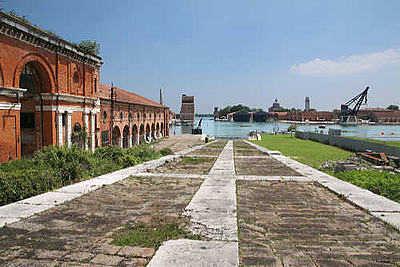
Architecture Biennale 2025
19th Internat. Architecture Exhibition, La Biennale di Venezia, 24 May - 23 Nov. 2025. Curator: Carlo Ratti.

Venice Biennale 2024
60th International Art Exhibition, 20 April - 24 November 2024. Curator: Adriano Pedrosa.
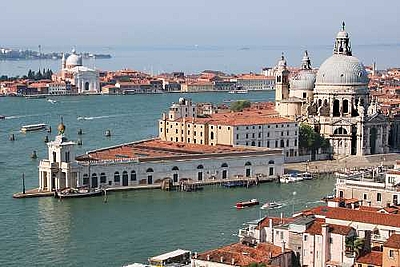
Art Destination Venice
Art-historical sites, museums, art centers. Photo tours show the fascination of the city beyond the beaten tracks.
Your are here
La biennale di venezia.
- Architecture
- 18th Exhibition
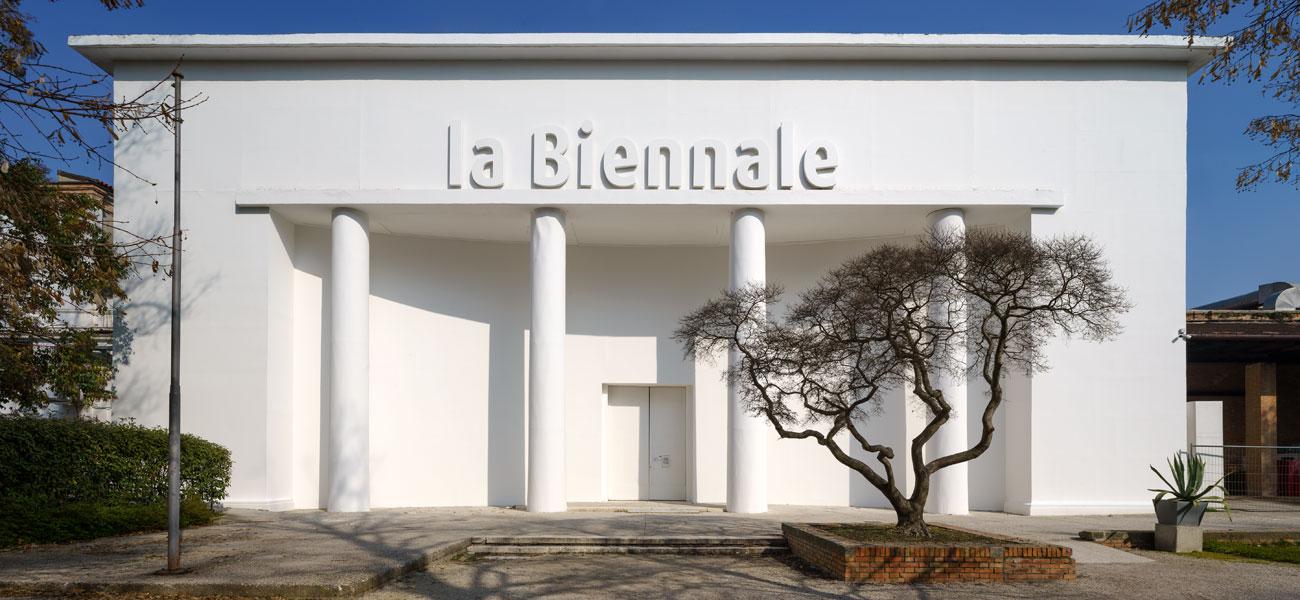
Biennale Architettura 2023
The 18 th International Architecture Exhibition , titled The Laboratory of the Future , will be open to the public from Saturday May 20 to Sunday November 26, 2023 at the Giardini and the Arsenale, and at Forte Marghera; it will be curated by Lesley Lokko and organised by La Biennale di Venezia . The pre-opening will take place on May 18 and 19 , the awards ceremony and inauguration will be held on Saturday 20 May 2023 .
The Laboratory of the Future
“What does it mean to be ‘ an agent of change’ ? (…) Over the past nine months, in hundreds of conversations, text messages, Zoom calls and meetings - stated Lesley Lokko - the question of whether exhibitions of this scale — both in terms of carbon and cost — are justified, has surfaced time and again. In May last year, I referred to the exhibition several times as ‘a story’, a narrative unfolding in space. Today, my understanding has changed. An architecture exhibition is both a moment and a process . It borrows its structure and format from art exhibitions, but it differs from art in critical ways which often go unnoticed. Aside from the desire to tell a story, questions of production, resources and representation are central to the way an architecture exhibition comes into the world, yet are rarely acknowledged or discussed . From the outset, it was clear that the essential gesture of The Laboratory of the Future would be ‘change’”.
“(…) For the first time ever, the spotlight has fallen on Africa and the African Diaspora, that fluid and enmeshed culture of people of African descent that now straddles the globe . What do we wish to say? How will what we say change anything? And, perhaps most importantly of all, how will what we say interact with and infuse what ‘others’ say, so that the exhibition is not a single story, but multiple stories that reflect the vexing, gorgeous kaleidoscope of ideas, contexts, aspirations, and meanings that is every voice responding to the issues of its time?”
“It is often said that culture is the sum total of the stories we tell ourselves, about ourselves. Whilst it is true, what is missing in the statement is any acknowledgement of who the ‘we’ in question is. In architecture particularly, the dominant voice has historically been a singular, exclusive voice, whose reach and power ignores huge swathes of humanity — financially, creatively, conceptually — as though we have been listening and speaking in one tongue only. The ‘story’ of architecture is therefore incomplete. Not wrong, but incomplete. It is in this context particularly that exhibitions matter ”.
Exhibition structure
“ The Laboratory of the Future is an exhibition in six parts . It includes 89 Participants , over half of whom are from Africa or the African Diaspora. The gender balance is 50/50 , and the average age of all Participants is 43 , dropping to 37 in the Curator’s Special Projects , where the youngest is 24 . 46% of participants count education as a form of practice , and, for the first time ever, nearly half of Participants are from sole or individual practices of five people or less . Across all the parts of The Laboratory of the Future , over 70% of exhibits are by practices run by an individual or a very small team. (…)”
“Central to all the projects is the primacy and potency of one tool: the imagination - Lokko said. It is impossible to build a better world if one cannot first imagine it. The Laboratory of the Future begins in the Central Pavilion in the Giardini , where 16 practices who represent a distilled force majeure of African and Diasporic architectural production have been gathered . It moves to the Arsenale complex , where participants in the Dangerous Liaisons section – also represented in Forte Marghera in Mestre - rub shoulders with the Curator’s Special Projects , for the first time a category that is as large as the others. Threaded through and amongst the works in both venues are young African and Diasporan practitioners , our Guests from the Future , whose work engages directly with the twin themes of this exhibition, decolonisation and decarbonisation , providing a snapshot, a glimpse of future practices and ways of seeing and being in the world. (…) We have deliberately chosen to frame participants as ‘practitioners’ – the Curator stated – and not ‘architects’ and/or ‘urbanists’, ‘designers’, ‘landscape architects’, ‘engineers’ or ‘academics’ because it is our contention that the rich, complex conditions of both Africa and a rapidly hybridising world call for a different and broader understanding of the term ‘architect’.
Statement by President Roberto Cicutto
“ A laboratory of the future must necessarily begin from a specific starting point, from one or more hypotheses seeking confirmation - Roberto Cicutto , President of La Biennale di Venezia, stated. Lokko starts with her continent of origin, Africa, to talk about its historical, economic, climate and political criticalities and to let us all know «that much of what is happening to the rest of the world has already happened to us. Let’s work together to understand where we have gone wrong so far and how we must face the future». This is a starting point that seeks to heed those segments of humanity that have been left out of the debate and opens to a multiplicity of voices that have been silenced for so long by the one that considered itself to be rightfully dominant in a vital and unavoidable contest .”
“ I believe that this is La Biennale di Venezia’s true task as an institution , and not only for Architecture . We must start here to seize the opportunity that will allow us to raise the bar in the way we approach all the other disciplines as well.” - (Roberto Cicutto Statement attached)
“ For the first time ever, the Biennale Architettura will include the Biennale College Architettura , which will run from 25 June to 22 July 2023. Fifteen renowned international tutors - Samia Henni, Marina Otero, Nana Biamah-Ofosu, Thireshen Govender, Lorenzo Romito, Jacopo Galli, Philippa Tumubweinee, Ngillan Gbadebo Faal, Rahesh Ram, Guillermo Fernández-Abascal, Urtzi Grau, Samir Pandya, Alice Clancy, Sarah de Villiers and Manijeh Verghese - will work with fifty students, early career practitioners and academics from around the world , selected by Lesley Lokko through an Open Call process over the four weeks of the teaching programme. At the conclusion of the Call on February 17 th , 986 applications had been received .
A documentary of the educational experience will be filmed by Ángel Borrego Cubero and released in October this year. An international cast of critics will join the College in July.”
The Laboratory of the Future programme is enriched by Carnival , a six-month-long cycle of events, lectures, panel discussions, films, and performances , that explore the themes of the Biennale Architettura 2023. “Conceived as a space of liberation rather than a spectacle or entertainment , Carnival offers a space for communication in which words, views, perspectives, and opinions are traded, heard, analysed, and remembered – Lokko said. Politicians, policymakers, poets, filmmakers, documentary makers, writers, activists, community organisers and public intellectuals will share the stage with architects, academics, and students. This public event programme is increasingly a form of architectural practice that attempts to bridge the gulf between architects and the public.” Carnival is supported by Rolex, Exclusive Partner and Official Timepiece of the Exhibition.
- National Participations
64 National Participations will organize their exhibitions in the historic Pavilions at the Giardini (27), at the Arsenale (22) and in the city centre of Venice (14). Niger participates for the first time at the Biennale Architettura; Panama participates for the first time with its own pavilion and has already participated in previous editions as part of the I.I.L.A. (Italo-Latin American International Organization). The Holy See returns to the Biennale Architettura , participating with its own Pavilion on the Island of San Giorgio Maggiore (it participated in the Biennale Architettura for the first time in 2018). The Italian Pavilion at the Tese delle Vergini in the Arsenale, sponsored and promoted by the Directorate-General for Contemporary Creativity of the Ministry of Culture , is curated by the Fosbury Architecture collective , consisting of Giacomo Ardesio, Alessandro Bonizzoni, Nicola Campri, Veronica Caprino, Claudia Mainardi. The title of the exhibition is SPAZIALE: Everyone Belongs to Everyone Else .
Venice Pavilion
The exhibition of the Venice Pavilion , located in the Giardini di Sant’Elena, is organized by the Municipality of Venice.
- Collateral Events
9 Collateral Events are scheduled for the 18 th International Architecture Exhibition titled The Laboratory of the Future , curated by Lesley Lokko and organized by La Biennale di Venezia .
The Collateral Events, which are admitted by the curator and promoted by non–profit national and international bodies and institutions , take place in several locations; they offer a wide range of contributions and participations that enrich the diversity of voices that characterizes the exhibition of Venice.
- Applied Arts Pavilion
La Biennale di Venezia and the Victoria and Albert Museum, London present for the seventh consecutive year the Applied Arts Pavilion Special Project (Arsenale, Sale d’Armi A) titled Tropical Modernism: Architecture and Power in West Africa , curated by Christopher Turner (V&A) with Nana Biamah-Ofosu and Bushra Mohamed (AA). The presentation is organised in collaboration with the Architectural Association (AA), London and the Kwame Nkrumah University of Science and Technology (KNUST), Kumasi.
Biennale Sessions The project for universities
La Biennale dedicates the Biennale Sessions project to Universities, Academies of Fine Arts, and other Institutes of Higher Learning. The aim is to facilitate three-day self-organized visits by groups of at least 50 students and teachers, offering assistance in the organization of travel and accommodations and the possibility of organizing seminars in exhibition venues free of charge.
Educational
For the past decade, La Biennale di Venezia has been devoting increased attention to learning activities and has developed a growing commitment to educational initiatives addressed to the audience of its Exhibitions, to universities, young people, and children, from schools at all levels. In the past two years, Biennale Architettura 2021 and Biennale Arte 2022 counted 111,164 participants in Education activities, of which 52,392 were young people. A broad Educational programme will be offered in 2023 as well, addressed to individuals and groups of students, children, adults, families, professionals, companies, and universities. All these initiatives aim to actively involve participants. They are conducted by professional operators, carefully trained by La Biennale, and they fall under the following categories: Guided Itineraries and Workshop Activities and Interactive Initiatives .
Editorial project and graphic identity
The official catalogue , titled The Laboratory of the Future , consists of two volumes .
Volume I is divided into different sections dedicated to the events of Carnival and to the Curator’s Special Projects . Two sections are dedicated to the International Exhibition curated by Lesley Lokko, respectively titled Force Majeure and Dangerous Liaisons . Each project on display in the Exhibition is accompanied by a critical text and a rich iconography that completes the Participants’ work. A further section is dedicated to the first edition of the Biennale College Architettura . Embedded throughout are a series of essays developing the themes of the Exhibition and a detailed record of the works on display.
Volume II presents the National Participations and the Collateral Events . It includes a series of illustrated texts that delve deeper into the projects on exhibit in the Pavilions and the Collateral Events at the Giardini, at the Arsenale and in various locations across Venice.
The graphic identity of the Biennale Architettura 2023 and the design of the publications are the work of Die Ateljee – Fred Swart . The volumes are published by Edizioni La Biennale di Venezia .
Partners and sponsors
The Biennale Architettura 2023 has been made possible by the support of Rolex, Partner and Official Timepiece of the event. We would like to thank the Sponsors of the Biennale Architettura 2023: Bloomberg Philanthropies with Bloomberg Connects and Vela-Venezia Unica . We would also like to thank Cleary Gottlieb Steen & Hamilton LLP .
Acknowledgements
We would like to thank the Ministry of Culture , the local institutions that support La Biennale in various ways, the City of Venice , the Veneto Region , the Soprintendenza Archeologia, Belle Arti e Paesaggio per il Comune di Venezia e Laguna , and the Italian Navy .
We thank the important international Donors , organisations and institutions who have contributed to the success of the Biennale Architettura 2023.
Our warmest thanks go to Lesley Lokko and her entire team .
Finally, we would also like thank everyone at La Biennale for the great professionalism and dedication they have demonstrated in the realisation and administration of the Exhibition.
Art, Architecture, Cinema, Dance, Music, Theatre, Historical Archives of Contemporary Arts, College, etc etc...
- The Organization
- Environmental sustainability
Departments
- Historical Archive
- Biennale Channel
- Biennale Educational
- Sponsorship
- Introduction by Roberto Cicutto
- Introduction by Lesley Lokko
- Participants and Special Projects
- Special Participations
- Biennale College Architettura 2023
- Biennale Sessions
Information
- When and where
- Services for the public
- How to get there
- Biennale Noticeboard
- Environmental Sustainability
- Working with us
- Biennale College
- Introduction by Pietrangelo Buttafuoco
- Introduction by Adriano Pedrosa
- Biennale College Arte
- Submissions
- Accreditation
- Regulations
- Submitting a film
- Technical specifications
- Venice Production Bridge
- Biennale College Cinema
- Permanent activities
- Dates and deadlines
- Introduction by Wayne McGregor
- Biennale College Danza
- Golden Lion for Lifetime Achievement
- Silver Lion
- Introduction by Lucia Ronchetti
- Biennale College Musica 2024
- Biennale Musica 2023 - Micro-Music (Video)
- A photo reportage by Frankie Casillo (2023)
- Introduction by ricci/forte
- Biennale College Teatro
- Presentation
- Biennale Library
- Exhibitions and activities
- Activities and panels
- Virtual Exhibitions
- Collections
- Biennale College ASAC
- When & where
Ca’ Giustinian, San Marco 1364/A 30124 Venice Tel. +39 041 5218711 email [email protected]
Press Office info and contact persons: Art, Architecture / Cinema / Dance, Music, Theatre Ca’ Giustinian, San Marco 1364/A, Venice
Press Office
Subscribe to the Newsletter and get the latest info on our programmes and initiatives.
Follow us on
- Note Legali
© La Biennale di Venezia 2023 - All website contents are copyright protected P.I.00330320276
Art Vacations Paintings Portfolios Photographs Mark Dahle home
Mark Dahle's tips for visiting the 60th Venice Biennale in 2024
If you like contemporary art, the Venice Biennale gives a great excuse to visit one of the most beautiful cities in the world. But bring comfortable walking shoes -- you'll have lots of ground to cover.

Basel, Switzerland. © Mark Dahle 2011.
If you want to explore the 2024 Venice Biennale (or the 2022 edition before it closes November 27), be sure to get refundable airfare and hotel accomodations. Then check Italy's entry requirements regularly, since covid restrictions have been changing frequently. In addition, Venice itself may have entry requirements that are different from Italy's; the city is exploring ways to limit visitors and these new regulations are in flux.
But don't let minor inconveniences stop you from seeing one of the most beautiful cities in the world. The 2022 and 2024 Biennales are great reasons to visit.
The Venice Biennale is held in more than 50 different locations scattered throughout the city. If you expect to find all the locations -- or even some of them -- you need to know a little about Venice itself.
Venice is two mazes laid on top of each other.
In a standard maze, narrow passages lead to dead ends. Venice has plenty of those.
Then Venice adds a second layer of complexity. The original maze is placed on top of an equally challenging maze made of water canals.
Sometimes there’s a bridge. Sometimes there isn’t. Sometimes there’s a landing for water transportation; sometimes there isn’t. In addition, on sixty random days (mostly in winter), the most direct route might be flooded.

As a result, the way to where you want to go is never straightforward. Complicating this, all the maps I’ve found have too little detail to be helpful. In Venice, you can be lost a lot of the time.
That might not matter so much, since Venice is beautiful, and any section of it is worth exploring. But if you’re going to the 2024 Venice Biennale, you probably want to see art. And to do that you have to find it.

Do not ignore this tip!
You can do one thing that will make an extraordinary difference in your visit to the Venice Biennale: make sure you have a cellphone that can roam in Italy with a GPS map.
Before you go, call your cellphone provider, buy an international data plan if you need it, and make sure they take off the block on international roaming. If you don’t have a cellphone with a map, I recommend you get one before your trip.
When in Venice, try not to smirk. You’ll be the only tourist in town who can quickly find anything.
If you need to, you keep your phone on "airplane mode" except when you're using the map to navigate and when you're making calls to minimize roaming charges.

If you only have a day. What are you thinking? Change your plans! Venice is easily worth a week, and you want to be there three or four days minimum.
But if you really only have a day for this incredibly beautiful city, you need to make some choices. If you prefer realistic and religious art painted from 1500 to 1800, get a guidebook from a bookstore or the library, skip the biennale, and enjoy your time. You’ll have lots of great choices. Expect to pay about 4 to 20 Euros at each stop.
If you prefer architecture, you wouldn't do wrong to just wander around lost all day, traveling on water taxis at random and seeing what you can. Be sure to go inside buildings on your journey; the interiors are often stunning.

If you only have a day and you prefer modern and contemporary art, here are my recommendations:
1) The Biennale has two locations where you don’t need GPS. I'd go to them, just because the exhibits are close together and you can maximize your time.
Arsenale. Take a water taxi to Arsenale or San Pietro and follow the signs.
Giardini. Take the water taxi to Giardini or Biennale. The restaurant at Giardini sometimes closes early, so if you want something hot, check its schedule. The cafeteria stays open later with sandwiches and salads.
2) Don't miss a great museum that's not part of the biennale itself.
At the Salute water taxi stop, turn left. The white building is the Punta della Dogana . The gorgeous interior houses art from the François Pinault Foundation.
What's inside may challenge your ideas about art, but it will be worth it if you spend time with the pieces and the commentaries on them.

Palazzo Grassi, a second space, is located near water taxi line #1 S. Angelo or line #2 S.Samuele.
If you have more than a day. Get out your walking shoes and your cell phone with map service. Then enjoy your exploring! There's enough to fill at least five days.
When you buy your ticket to the Biennale, you'll get a map and a list of related exhibits around the city. You only need the ticket to enter the Arsenale and Giardini sections of the Biennale, so you'll only need a one- or two-day ticket.
If you don't have a phone with a map, find what you can and enjoy the time you're lost. It's a beautiful city.
It may be worth it to hire a local as a guide.
What day to visit.
Most venues close either Sunday, Monday or Tuesday, so if you're in Venice one of those days, plan your excursions accordingly.
On Sunday almost everything is open, but check the biennale guide.
On Monday, the Arsenale and Giardini sections of the biennale are closed. But if Monday's your day, there are enough other places open to fill your time.
On Tuesday, the Punta della Dogana, Palazzo Grassi and Peggy Guggenheim Collection are closed.
Don't worry if you're in town any of those days; what's open will be more than enough to fill your day with great art.
One month before you leave. A month before you leave, go on a very long hike wearing the shoes and socks you plan to use in Venice. Your feet will thank you, especially if you need to make changes before you go.

Venice construction site. © Mark Dahle 2013.
Highlights from the 55th Venice Biennale in 2013.

Phyllida Barlow, Untitled (5/Arsenale)

Hans Josephsohn sculptures and Daniel Hesidence paintings (3/Arsenale)

Pawel Althamer, Venetians, detail of a room full of them (9/Arsenale)

Painting in the Arsenale, 2013 Venice Biennale

Background, Sri Astari, Dancing the Wild Seas, and foreground, Albert Yonathan Setyawan, Cosmic Labyrinth: A Silent Pathway , at the Indonesian Pavilion (ID/Arsonale)

Odires Mlaszho, Deutsches Worter Buch (Altered book) at the Brazil Pavilion (BR/Giardini).

Detail of The Feast of Trimalchio, Arrival of the Golden Boat, one of the two amazing staged photographs by AES+F at the back of Padiglione Venezia (P.VE/Giardini)

Herre Methorst at Personal Structures (Palazzo Bembo ).

Basket Maker, by Bassim Al-Shaker, at the Iraq Pavilion.

Rene Rietmeyer and Toshikatsu Endo at Personal Structures (Palazzo Bembo).
Highlights from the 54th Venice Biennale in 2011.
Here were my top choices, in 2011:
1) Future Pass: From Asia to the world was the best collection of contemporary art per square foot in the 2011 biennale.

2) My second and third choices weren’t part of the bienniale itself, they were the Punta della Dogana and Palazzo Grassi mentioned above.
The gorgeous interior of the Punta della Dogana houses art from the François Pinault Foundation.
At Palazzo Grassi two great videos by Francesco Vezzoli were being shown in 2011. Democrazy shows two political ads playing at the same time, a potent mix that is worth viewing multiple times. And Marlene Redux: a True Hollywood Story! is a hilarious parody of television entertainment news. It's a great, great example of multi-leveled video as art. If you aren't laughing, you might be offended. Either way, it'll be worth it.

This wax statue at Arsenale.
3) The Arsenale.
Highlights in 2011 included Christian Marclay’s video The Clock and a James Turrell light installation. The Clock is playing at locations around the world, so you may have a chance to see it elsewhere. If so, pull up a chair and plan on being delighted and intrigued by a collection of movie clips that work their way through the hours of the day, one minute at a time. Sit as long as you like; it’s a 24-hour video.
In the India pavilion a highlight was riding on Gigi Scaria's Elevator from the Sub-continent.

Six of the 2000 pigeons above people's heads at the Padiglione Centrale in 2011.
Other highlights in 2011:
* The France pavilion had a great installation titled “Chance.” With all the metal rollers spinning noisily, you could hear it before you saw it.

Chance by Christian Boltanski.
* The Padiglione Venezia (P.VE), had a series of boats worth visiting ( Vertical Seas by Fabrizio Plessi).
* My personal favorite could be guessed by anyone familiar with my photography; Gott liebt die Serba was an incredibly beautiful installation, and Gott Liebt die Serba 1 was very powerful as well. Both were in the Serbia pavilion.

Detail of Gott liebt die Serba, Venice Biennale 2011.
If you’re a fan of video, Finland (FIN) and Poland (PL) both had video worth checking out, and there was an interesting short animated film Quatrosopos in the Denmark pavilion (DK).

Venice Biennale 2011 video (Quatrosopos by Han Hoogerbrugge).

Detail of Imposition Symphony, 2011, a large mural by Stelios Faitakis on an outside wall of the Danish Pavilion in the Giardini section.

More Art Vacations Paintings Portfolios Photographs Mark Dahle home
Biennale Pavilions online
National pavilions bring you exhibition tours, online streams, events schedule and insight to 2023 pavilions..

Watch pavilions online events from 2021
%20(1).png)
Upcoming events
Pavilions 2023

Austrian Pavilion

Dutch pavilion

French pavilion

LUXEMBOURG PAVILION

Pavilion of Finland

Pavilion of Poland

Singapore Pavilion

Switzerland

THE GREEN LION WORKSHOP
Title sponsors

MultiCityTV digital services

Venice Art Biennale 2024: a guide to what to see in and around the city
As the Venice Art Biennale kicks off (20 April - 24 November 2024), here is an ever-growing list of what to see in and around Venice.
- Sign up to our newsletter Newsletter

At the Venice Art Biennale, countries from all over the world gather to showcase contemporary artists. In the main show, the world’s best curators give their take on the most prescient art being made today. The drama is high, the events are many: this is a chance to see some of the best, most relevant art around in an incomparable setting.
This year the biennale’s 60th edition is guided by the main exhibition’s title is ‘Stranieri Ovunque – Foreigners Everywhere’ inspired by the Palermo collective Claire Fontaine. At the world’s most famous national art exhibition we are being asked questions about internationality, belonging, identity, nationalism and acceptance. No small remit in today’s world.
“Artists have always travelled and moved about, under various circumstances, through cities, countries and continents, something that has only accelerated since the late 20th century—ironically a period marked by increasing restrictions regarding the dislocation or displacement of people,” read curator Adriano Pedrosa. “The Biennale Arte 2024’s primary focus is thus artists who are themselves foreigners, immigrants, expatriates, diasporic, émigrés, exiled, or refugees—particularly those who have moved between the Global South and the Global North. Migration and decolonization are key themes here.”
The Venice Biennale 2024: the pavilions
Pedrosa’s main show will include art by 332 living and late artists, most of whom are from Africa, Latin America, Asia and the Middle East. He is the artistic director of Museu de Arte de São Paulo Assis Chateaubriand (MASP) and has staged a number of exhibitions focusing on art made by indigenous artists, both historic and contemporary.
If you are heading over to The Floating City then national pavilions vying for the coveted Golden Lion are John Akomfrah who works mainly in film installation ‘ Listening All Night To The Rain’ for Britain which is one of the most hotly anticipated exhibitions as is Kapwani Kiwanga: TRINKET representing Canada and Wael Shawky known for his considered film work is presenting the musical film Drama 1882 for Egypt. Veteran artist Gülsün Karamustafa will represent Turkey, France is being represented by sculptor French-Jamaican Julien Creuzet, emerging painting star Tesfaye Urgessa will be showing for Ethiopia and Eimear Walshe is representing Ireland with ‘Romantic Ireland’.
There is a high number of artists from indigenous communities being showcased in this edition, namely Jeffrey Gibson representing the United States, Greenlandian artist Inuuteq Storch will be exhibiting for Denmark, Archie Moore for Australia and Glicéria Tupinambá will be exhibiting for Brazil.
There are also a number of collectives and group pavilion exhibitions this edition with Renzo Martens working with Cercle d’Art des Travailleurs de Plantation Congolaise (CATPC) for the Netherlands, musician Andrea Mancini and Brussels-based design collective Every Island presenting for Luxembourg, Aindrea Emelife curating the Nigerian pavilion in a group show include Yinka Shonibare . Precious Okoyomon and Toyin Ojih Odutola, the Ukrainian artist’s collective, will be staging a collective portrait of witnesses of the war in Ukraine be curated by Marta Czyż, and Azu Nwagbogu curates artists Chloé Quenum, Moufouli Bello, Ishola Akpo, and Romuald Hazoumè for the Republic of Benin. See all the artists exhibiting at the pavilions .
Wallpaper* Newsletter
Receive our daily digest of inspiration, escapism and design stories from around the world direct to your inbox
The Venice Biennale: collateral events around the city
In addition to the biennale and the exhibitions opening around Venice next week there are a number of collateral events, and these can often be some of the most exciting and surprising shows at the biennale. Rebecca Ackroyd is showing Mirror Stage at Fondaco Marcello, British Pakistani artist Osman Yousefzada is putting on Welcome! A Palazzo for Immigrants at Palazzo Cavalli-Franchetti, Fondation Louis Vuitton is exhibiting Ernest Pignon-Ernest, the Chanakya Foundation is staging Cosmic Garden a show of textile works made in India, the feminist show Breasts is opening at APC Palazzo Franchetti and Ewa Juszkiewicz’s solo show is at Palazzo Cavanis. Peter Hujar: Portraits in Life and Death is at Istituto Santa Maria della Pietà, and Artists and Allies x Hebron is exhibiting South West Bank: Landworks, Collective Action and Sound, a group show of work made in the region at Magazzino Gallery.
Outside the biennale, exhibitions in Venice’s stunning institutions never fail to impress with the hotly anticipated Willem De Kooning E L'italia at the Accademia, Julie Mehretu: Ensemble, a film installation by Edith Dekyndt and Liminal by Pierre Huyghe presented by the Pinault Collection at Palazzo Grassi, Fondazione In Between Art Film in its second edition, Nebula at Complesso dell’Ospedaletto and Re-Stor(y)ing Oceania at TBA21: OCEAN SPACE, Martha Jungwirth: Herz der Finsternis at Galleria Palazzo Cini Alex Katz’s ‘Claire, Grass and Water’ at Isola di San Giorgio Maggiore and the Guggenheim is showing an exhibition of work by Jean Cocteau.
Criticisms have often been levelled at the biennale for its inherently nationalistic set up, but this time many countries have taken an interesting tack on national representation, foregrounding indigenous artists and collectives. The main exhibition’s tilt towards the oft called Global South will also mean that here in the Europe we are being introduced to artists and ideas we know little about. All this promises an interesting show for our troubled times.
The 60th Venice Biennale runs throughout the city until November 2024
Venice Biennale 2024 in depth: Wallpaper* must-sees
Berlinde de bruyckere’s angels without faces touch down in venice church.

Belgian artist Berlinde De Bruyckere has visited Venice numerous times in the past and exhibited her work during different editions of the biennale. She also represented Belgium in 2013, with an installation of a gargantuan fallen cripple wood tree (a species known and named for its twisted branches).
An architectural characteristic the artist has long found interesting about the city is hidden in the details. ‘During my walks around Venice, I have always been intrigued by how the walls are full of water and show the wounds caused by this containment,’ De Bruyckere tells Wallpaper*. For her Belgian Pavilion installation, she had marked those wall wounds inside the space by scratching them onto the canvas.
Writer: Osman Can Yerebakan
Read more here
Elias Sime reflects on the destructive nature of technology in Venice

At a glance, Elias Sime's visually appealing large-scale wall works look like painted art pieces.
The work is made from repurposing electronic parts, including electrical wires, keyboards, and motherboards. The materials are mainly sourced from Mercato, the biggest open-air market in Africa, in the Ethiopian artist’s hometown of Addis Ababa. (The market is one of the places where the West dumps its technological waste on the continent.)
Writer: Gameli Hamelo
Kapwani Kiwanga considers value and commerce for the Canada Pavilion at the Venice Biennale 2024
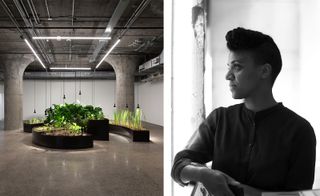
Paris-based, Canadian artist Kapwani Kiwanga draws on her anthropological training for pieces that criss-cross a multitude of mediums at the Venice Biennale 2024. From performance and embroidery to sculpture and installation, her work considers the political implications of material, from the impact of the agricultural revolution to the consequences of alien species crossing continents.
Writer: Hannah Silver
Lap-See Lam’s giant dragon head and tail takes over the Nordic Pavilion at the Venice Biennale

This year, artist Lap-See Lam is leading an especially bold exhibition for Norway, placing a huge bronze dragon’s head and tail outside and filling the interior space with a floor-to-ceiling grid of bamboo poles. This commanding installation plays host to her hour-long ‘The Altersea Opera’, created with composer Tze Yeung Ho, with LED screens showing pre-recorded performances and multiple speakers throughout the space.
Writer: Emily Steer
Guglielmo Castelli considers fragility and violence with painting series in Venice

Guglielmo Castelli’s exhibition ‘Improving Songs for Anxious Children’ at Palazzetto Tito, Venice, explores childhood as the genesis of discovery. Bringing together a series of paintings, maquettes, textiles and knitted sculptures, the show explores the body, relationships, death and the dance between success and failure. Inside Castelli’s canvases, figures bend and contort in ways that defy anatomy, and are set against familiar domestic backdrops. The works portray a metaphysical realm, one that explores ideas of fragility and violence, carelessness and attentiveness, and morality and corruption.
Writer: Sofia Hallstrom
Tesfaye Urgessa is the artist behind the first-ever Ethiopian Pavilion at the Venice Art Biennale

As the selected artist for the first-ever Ethiopian Pavilion at a Venice Art Biennale , Tesfaye Urgessa’s commission comes with more than the average amount of pressure. Urgessa, however, is taking it in his stride, appreciating the timing of the project, which coincides with a personal and professional full circle. After beginning his career in Ethiopia, studying under painter Tadesse Mesfin, he enrolled in the Staatlichen Akademie in Stuttgart, a move that saw him hone a style that juxtaposes Western and African references.
What’s the big deal with breasts, ask artists at the Venice Biennale
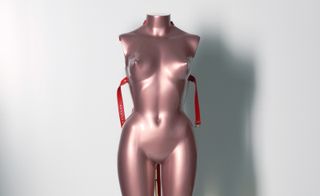
Breasts have endlessly captivated artists – from the Old Masters to Cindy Sherman , Richard Dupont to Marcel Duchamp . Across the centuries, and through the mediums of sculpture, photography, film and painting, they have been a lens through which to dissect sexuality, illness, motherhood and politics, as well as igniting discussions on identity, class and race. They have also been fascinating, funny and fantastic, simply in their own right.
Now, a major new group exhibition in Venice asks why. Bringing together 30 established and emerging artists, curator Carolina Pasti is considering the issue at ACP Palazzo Franchetti. But where to begin?
John Akomfrah explores the sonic for the British Pavilion at the Venice Biennale 2024
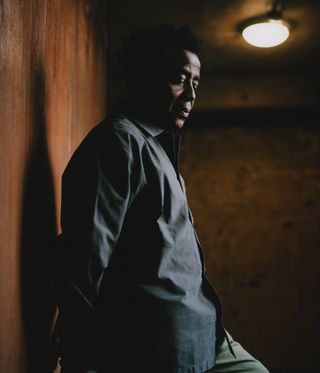
John Akomfrah’s immersive and visual works consider migration and diasporic communities through the media of film. Now, in new work for the Venice Biennale , commissioned and managed by the British Council, Akomfrah is dissecting a historical narrative through an auditory lens, putting sound at the centre of his new piece, Listening All Night To The Rain .
Amah-Rose Abrams is a British writer, editor and broadcaster covering arts and culture based in London. In her decade plus career she has covered and broken arts stories all over the world and has interviewed artists including Marina Abramovic, Nan Goldin, Ai Weiwei, Lubaina Himid and Herzog & de Meuron. She has also worked in content strategy and production.

From the deliberately dull new Boring Phone to Honor’s latest hook-up with Porsche, a host of new devices that do the phone thing slightly differently
By Jonathan Bell Published 17 April 24

Belgian artist Berlinde De Bruyckere’s recent archangel sculptures occupy the 16th-century white marble Abbazia di San Giorgio Maggiore for the Venice Biennale 2024
By Osman Can Yerebakan Published 17 April 24
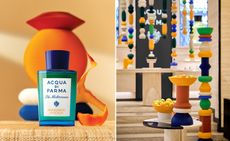
Acqua di Parma and Fornice Objects bring the splendour of Sicilian mandarin fields to Milan to celebrate new fragrance Mandarino di Sicilia
By Simon Mills Published 17 April 24
- Contact Future's experts
- Terms and conditions
- Privacy policy
- Cookies policy
- Advertise with us
Wallpaper* is part of Future plc, an international media group and leading digital publisher. Visit our corporate site . © Future Publishing Limited Quay House, The Ambury, Bath BA1 1UA. All rights reserved. England and Wales company registration number 2008885.
Venice Biennale 2024: the must-see pavilions in the Giardini
From cocoa-covered creations, to spaceships and rotting fruit, here is our selection of top shows from the first preview day.
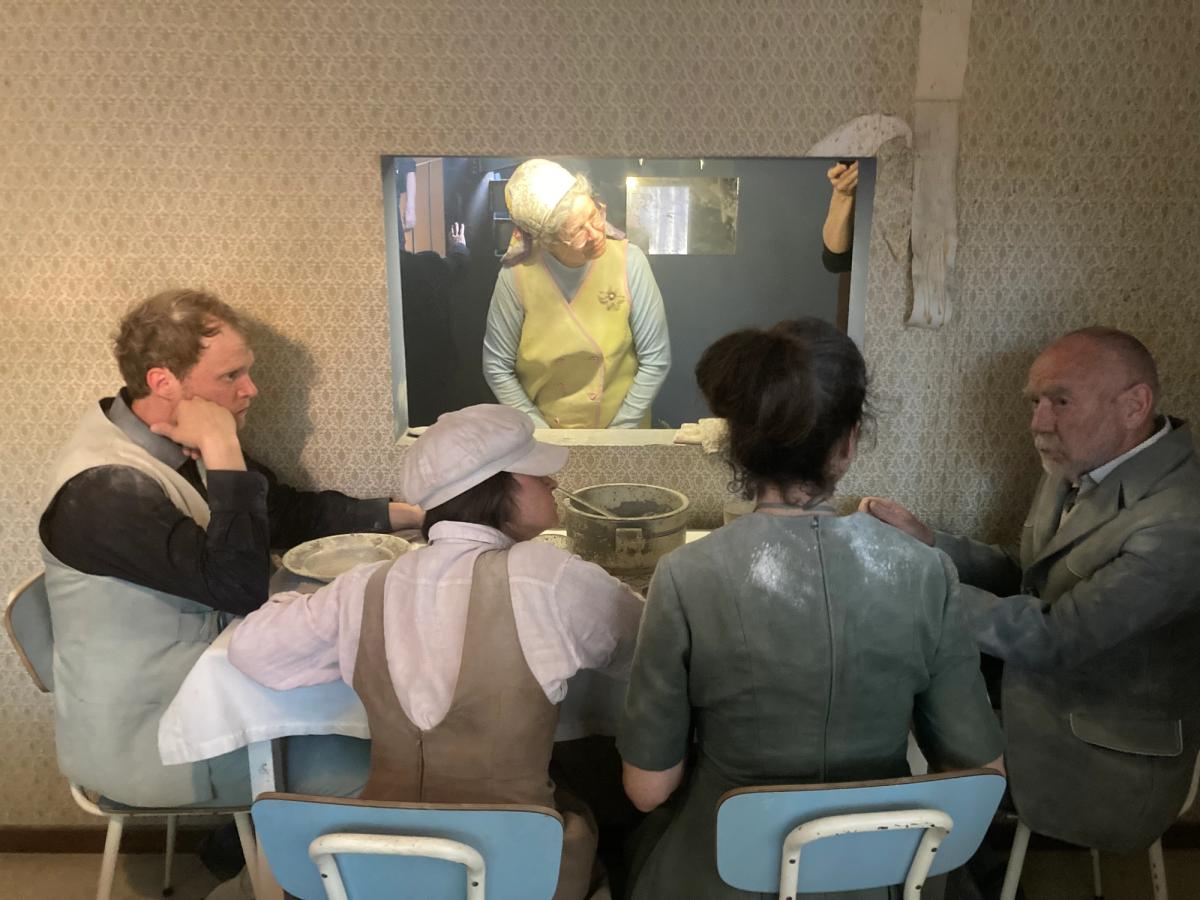
Yael Bartana and Ersan Mondtag's Thresholds in the German pavilion © The Art Newspaper
The decision that the Israel pavilion will remain closed until a ceasefire and hostage release agreement are reached may have dominated the headlines on the first media preview day of the Venice Biennale, but the other pavilions in the Giardini opened as planned. Here is our pick.
German pavilion Thresholds , Yael Bartana and Ersan Mondtag The stench of bitumen and dust that fills your nostrils, the candid nudity of the performer, a heightening of senses through a soundtrack of strings and wind, all play a pivotal role in the central installation by Ersan Mondtag, loosely based on his grandfather who worked in an asbestos factory and died as a result.
The German pavilion is all spectacle, even before you enter the earthen monolith at its centre. From the building’s high windows stream rays of light dramatised by pumped-in mist and Yael Bartana’s spaceship hovers cinematically in its own Space Odyseean way. The feel of the pavilion is filmic, visceral, and the performances are incredibly moving at times.
Drama 1882 , Wael Shawky
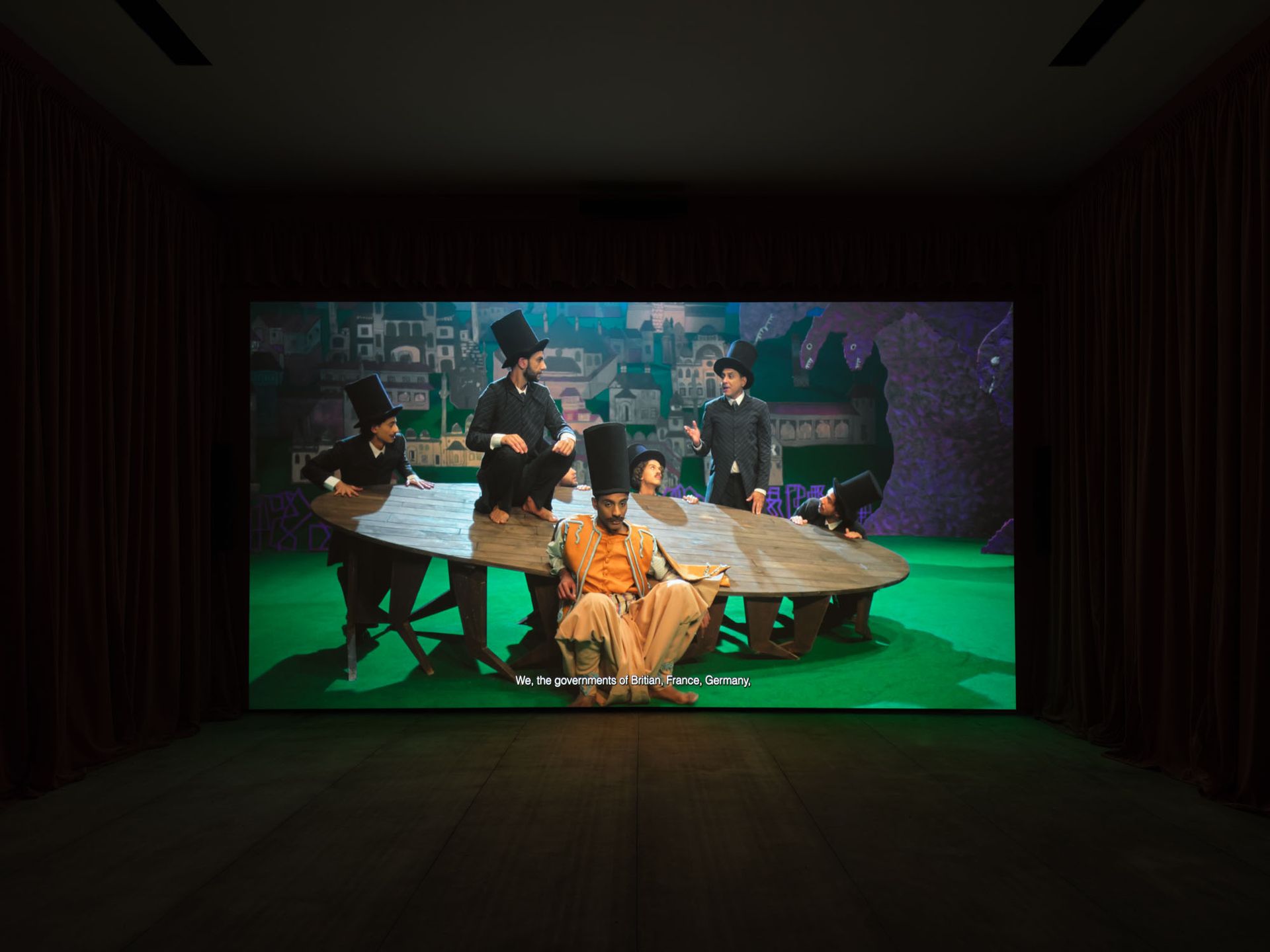
Wael Shawky, Drama , 1882 (2024) © Wael Shawky. Courtesy of Sfeir-Semler Gallery, Lisson Gallery, Lia Rumma, and Barakat Contemporary
One of the most inventive and unusual offerings at this year’s Venice Biennale comes courtesy of Wael Shawky, the artist selected to represent Egypt. Shawky’s film, Drama 1882 , brings to life a pivotal moment in the history of the country, namely the crushing of the nationalist Urabi revolution in 1882, which resulted in British occupation until 1956. Shawky tackles the concept of revisionist history and colonial legacy in an engaging way. Who could not be moved by this musical, filmed in a historic theatre in Alexandria, that melds revolutionary moments in history with a series of sweet, surreal melodies (plus Sobhy the donkey)?
Repeat After Me, Open Group

Open Group's Repeat after me © Photo by Emilia Lipa, courtesy the artists.
Londoners in the Second World War learned to dread the buzzing noise made by the V1 rockets that devastated the city. The film in the Polish pavilion offers a reminder of how, over the past two years, Ukrainians have similarly had to learn a new vocabulary of sounds: the verbal warnings of the early warning systems, the high-pitched “brrrrrr” of a drone and the screech of a cruise missile.
Repeat After Me II , by the Ukrainian collective Open Group, records ordinary Ukrainians mimicking the noises they now have an unwanted familiarity with. They then urge the audience to “repeat with me”.
The choice of artist for the Polish pavilion has become politicised , after the new government cancelled the original artist. But the choice of Open Group speaks beyond party politics, reflecting a fearful new future for Europeans: you too might soon need to recognise the sound of approaching death.
Kith and kin , Archie Moore
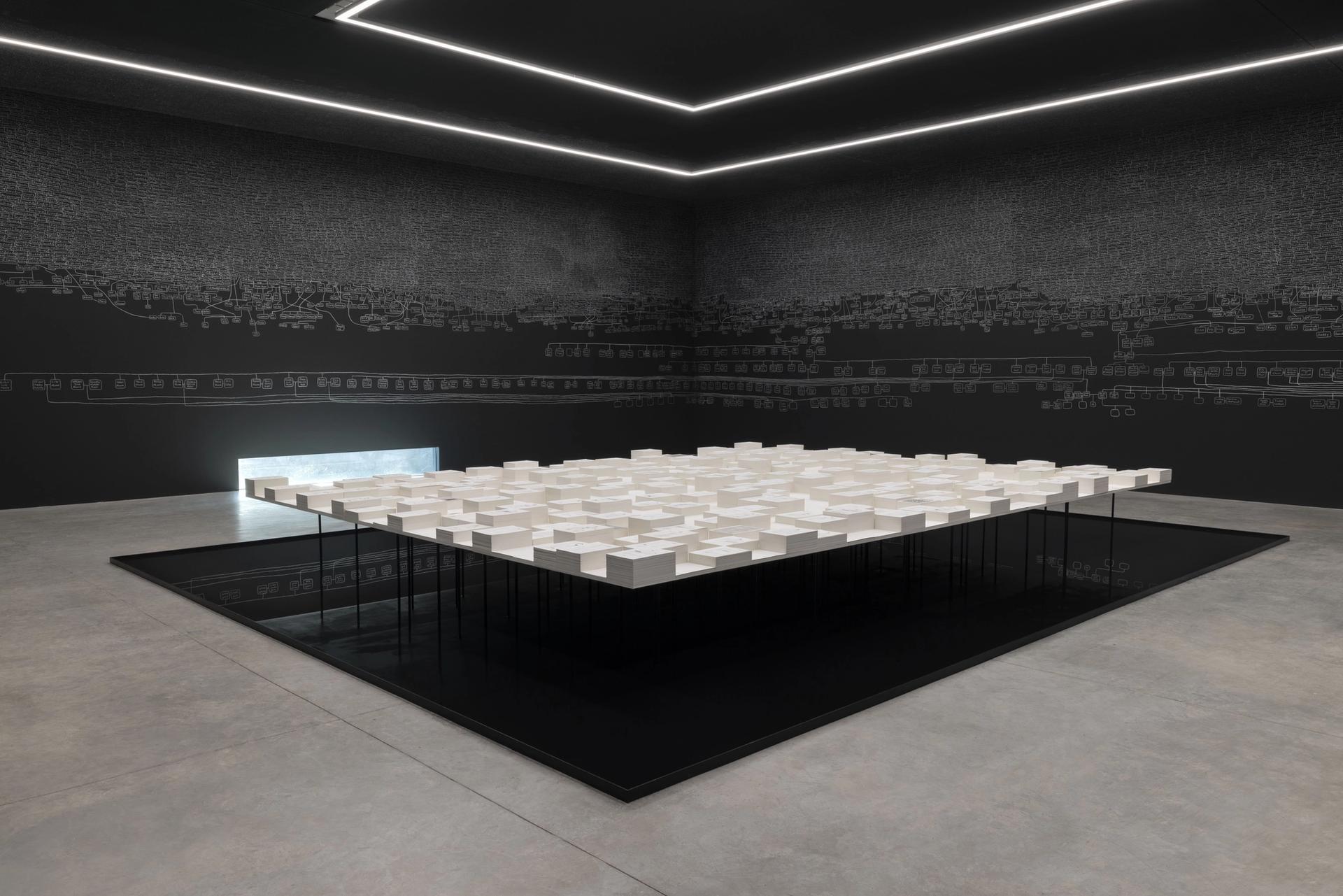
Installation view of Archie Moore, kith and kin (2024), Australia Pavilion at Venice Biennale 2024
Photo: Andrea Rossetti; © the artist; oimage courtesy of the artist and The Commercial
A sombre, intensely moving experience awaits visitors to the Australia pavilion, where the artist Archie Moore has created a genealogical chart—in white chalk on black walls—tracing his Kamilaroi, Bigambul and British ancestry going back 65,000 years. It is both a celebration of First Nation Australian perceptions of lineage and connectivity and a window onto deep trauma: some entries are taken up by racist slurs, while gaps represent the many who have been murdered, killed by disease or erased from public record. In the centre is a black reflective “pool”, above which are tables containing redacted coroners’ inquests into the deaths of Indigenous Australians in state custody. It is hard but essential viewing.
The Netherlands
The International Celebration of Blasphemy and the Sacred , CATPC, Renzo Martens and Hicham Khalidi

PCATC, Renzo Martens and Hicham Khalidi, The International Clebration of Blasphemy and the Sacred in the Dutch pavilion
Much art is made to spotlight the injustices in this world, but how much of it actually makes a difference? The Dutch pavilion is making a go of it. Stepping into the space, visitors are met with the strong smell of cocoa. Along with palm oil, the coveted dark material was grown and harvested by the multinational Unilever in the Democratic Republic of Congo, from where the artists in this show, CATPC, hail. Through their vivid, cocoa-covered sculptures, on show in the Biennale, they have been able to raise funds to buy back some of the land where they and their families have worked.
Leveraging the power of the Biennale, the Congo-based collective, in collaboration with the artist Renzo Martens and the curator Hicham Khalidi, was also able to persuade the Virginia Museum of Fine Arts to send a wooden statue from the 1930s of the Belgian colonial officer Maximilien Balot back on loan to their town of Lusanga, from where it disappeared 50 years ago. This is art effecting change where so much else has failed.
Compose , Yuko Mohri

Yuko Mohri's Compose in the Japan pavilion © The Art Newspaper
A choir of decomposing fruit and wobbling contraptions of leaky tubes and faucets forms a beautiful and understatedly political presentation by Yuko Mohri.
She was inspired by how flooding subways in Tokyo are fixed through a number of ingenious and makeshift ways. On a formal level, the exhibition leans into the chaos of those haphazardly constructed, quotidian sculptural interventions found throughout the city. Impressively it manages to do so without sacrificing a sense of balance or harmony.
Mohri, like all good artists, knows that human creativity is based on problem solving, and the bigger the issue, the further we must expand our imaginations to fix it.
On polished wooden tables more suited to the bathrooms in a luxury hotel than as surfaces for festering matter, pieces of rotting fruit are connected via electrodes to large speakers to emit modulating, ambient sounds, determined by the shifts in moisture levels during the decomposition process. It is decay as performance, death refigured as new life. In a biennial replete with art about crisis, one must be reminded of our potential for bringing about change. If we got ourselves into this mess, we can get ourselves out.
Best of the rest
• John Akomfrah’s thematically sprawling but visually resplendent show in the British pavilion explores links between ecological degradation, colonial histories and the sounds of water bodies.
• Serban Savu in the Romanian pavilion paints scenes of rest and leisure, in contrast to the socialist-era veneration of work.
• Jeffrey Gibson, the first Indigenous artist to have a solo show in the US pavilion , blends Native American traditions with text, textiles and themes of identity and globalism.
• Aleksandar Denić has turned the Serbian pavilion into a familiar yet disconcerting world, with a bedroom, bathroom and bar.
- Share full article
Advertisement
Supported by
The Wild, the Weird and the Controversial: the 2024 Venice Biennale
As visitors pour in, parallel art displays are cropping up around the city, including lesser-known de Kooning works and an installation that has incensed locals.

By Farah Nayeri
Willem de Kooning had never been to Italy when he traveled to Venice for an amorous rendezvous in September 1959. Things got complicated, so the Dutch-born artist made a quick trip to Rome — and was completely entranced. He immediately returned for a nearly four-month stay in the Italian capital, and was back again in the summer of 1969.
Those whirlwind jaunts are the focus of “Willem de Kooning and Italy,” a new exhibition that opened on Wednesday at the Gallerie dell’Accademia in Venice. It’s part of a rich rollout of events timed to coincide with the Venice Art Biennale — not all of which are to Venetians’ liking.
The Biennale, which has hosted a who’s who of contemporary artists since its 1895 founding, drew a record 800,000 visitors at its previous edition in 2022. This year, 331 artists and collectives are represented in the central exhibition (curated by Adriano Pedrosa), and dozens of others are presenting work in 87 national pavilions. In parallel to the Biennale, there are dozens of exhibitions timed to coincide with it — including the de Kooning show.
The show illustrates, through 75 works, how brief voyages to Italy shifted the trajectory of the Dutch-born, New York-based artist, who is universally recognized as a pioneer of Abstract Expressionism, one of the most important postwar art movements in the United States.
Without the Rome stopovers, the art historian Gary Garrels said, “I can’t imagine that he ever would have made sculptures.” Garrels, the former longtime chief curator for the San Francisco Museum of Modern Art who co-curated the show with Mario Codognato, noted that on de Kooning’s second stint in Rome in 1969, the artist started making small clay figures in a foundry of the sculptor Herzl Emanuel, some of which were then cast in bronze — and that in the four years that followed, sculpture became a central pursuit. The Accademia will present an almost comprehensive group of the sculptures.
The black-and-white drawings that de Kooning produced on his first stay in 1959 clearly influenced the paintings he made right afterward, and a number of those will also be in the show, Garrels said.
While the name and legacy of the artist are still very much connected to Abstract Expressionism, Garrels said, “it’s time that we look at de Kooning in a somewhat different, fresh way.”
“He loved American culture,” she said, “but he also continued to have deep interest in the history, the culture of Western Europe, especially Italy.”
“Somehow, that hasn’t been as acknowledged,” he added.
A short walk from the Accademia is what was for centuries Venice’s maritime customs house — the Punta della Dogana — where ships stopped for inspection. It’s one of two contemporary-art spaces established in the city by the French billionaire collector and patron François Pinault, and currently hosts a solo show by the French-born artist Pierre Huyghe.
Huyghe is known for incorporating living organisms (fauna and flora) in his art. Ants and spiders crawled the floor and walls of a gallery during a 2011 exhibition in Germany. In the 2012 Documenta exhibition in Kassel, Germany, his outdoor display included psychotropic plants, a wandering dog with a leg painted pink, and a reclining statue with a beehive on its head.
The artist creates situations involving animals, plants or machines and lets chance and happenstance take over.
While there are no spiders or pink-legged dogs in his Punta della Dogana show “Liminal,” one aquarium contains a crab that lodges itself inside the replica of a sculpted head by the artist Constantin Brancusi, while another aquarium features starfish covering the legs of a truncated nude figure made of concrete.
An exhibition highlight is “Camata” (2024): a film where machine-driven robots carry out a mysterious ritual on an unburied human skeleton in the Atacama Desert in Chile, the oldest and driest desert on earth. The film is edited in real time, during the exhibition, by artificial intelligence; it has no beginning or end, and is constantly changing.
Emma Lavigne, chief executive of the Pinault Collection, noted that, over the last 10 years, displays by Huyghe had featured “forms from art and forms from nature, the controlled and the uncontrolled, and they have invited us to completely rethink the exhibition space.”
“In this exhibition, he examines the threshold between life and death, between life and the afterlife, between the human and the animal, and between humanity as we know it and the new forms of humanity created by artificial intelligence,” added Lavigne, who curated the Pierre Huyghe retrospective at the Pompidou Center in Paris in 2014-15.
Disturbing though they may be, Huyghe’s artworks (which have been on view at Punta della Dogana since March 17) have not made waves among the people of Venice. The same cannot be said for “Las Meninas a San Marco,” an outdoor art installation by the artist Manolo Valdés: a row of 13 bronze sculptures of female figures inspired by the young ladies-in-waiting in the Velázquez painting “Las Meninas.” The figures stand on the most conspicuous spot in Venice: the extension of St. Mark’s Square that leads to the Grand Canal — right outside the Doge’s Palace.
Installed by Venice’s Contini Gallery (who paid 122,000 euros, or about $132,480, for the privilege, according to a local news site), “Las Meninas a San Marco” will be taken down on June 15. But some Venetians are incensed.
In a statement, the heritage group Italia Nostra-Venezia denounced “an umpteenth act of violence against an already martyred body,” meaning the city of Venice, and said: “Not everything is for sale in Venice, and especially not our cultural heritage.” It was, the group said, yet another sign of a “biennalization” of the city that has been going on for decades, and seen contemporary art overtake Venice.
The group’s Facebook post drew growls of discontent. “Horrendous, out of place, exaggerated,” wrote one commentator of the sculptures. Another said one sculpture was enough; why have 13? A third wondered whether the bronze figures were standing in line.
The timing of the installation is no accident: Opening just two weeks before the Venice Biennale, it is sure to get attention.
Why so much attention? Liza Essers, who runs South Africa’s pioneering Goodman Gallery, explained that the Biennale “has the authority, the power, the voice that determines art history, in many ways.”
Goodman, which also has galleries in London and New York, is poised for its best Biennale ever, she said: Five living artists it represents are included in the Biennale exhibitions (the main show and the pavilions), as are five 20th-century artists whom it has exhibited frequently since it was founded in 1966.
In addition, one of the gallery’s artists, William Kentridge, is being shown in a parallel space, the Arsenale Institute for Politics of Representation.
“Self-Portrait As a Coffee Pot” is a nine-episode video series created by Kentridge in his studio during and after the Covid lockdown. The artist films himself — sometimes comically and using camera tricks — talking and making wall-sized charcoal drawings that represent his childhood, South Africa’s history and his creative process.
Essers said that there had been a longstanding tendency by the art world to “put Africa into one box” when there are “many countries in Africa.”
This year’s Biennale will be different, she said: There are more than 50 artists from the African continent in Pedrosa’s central exhibition alone — an unprecedented number. The exhibition will be “rewriting history and inserting a voice from the Global South into the Western canon and into the narrative of art history.”
Choctaw Artist Jeffrey Gibson Confronts History at US Pavilion as Its First Solo Indigenous Artist
Jeffrey Gibson’s takeover of the U.S. pavilion for this year’s Venice Biennale contemporary art show is a celebration of color, pattern and craft

Artist Jeffrey Gibson poses inside the US pavilion during the media open day at the 60th Biennale of Arts in Venice, Italy, Tuesday, April 16, 2024. A Mississippi Choctaw of Cherokee descent, Gibson is the first Native American to represent the United States solo at the Venice Biennale, the world’s oldest contemporary art show. Gibson mixes Western modernism and Native American craft in his vibrantly hued paintings and sculptures. (AP Photo/Luca Bruno)
VENICE, Italy (AP) — Jeffrey Gibson’s takeover of the U.S. pavilion for this year’s Venice Biennale contemporary art show is a celebration of color, pattern and craft, which is immediately evident on approaching the bright red facade decorated by a colorful clash of geometry and a foreground dominated by a riot of gigantic red podiums.
Gibson, a Mississippi Choctaw with Cherokee descent, is the first Native American to represent the United States solo at the Venice Biennale, the world’s oldest contemporary art show. For context, the last time Native American artists were included was in 1932.
Gibson, 52, accepts the weight of the honor, but he prefers to focus on how his participation can forge greater inclusion going forward.
“The first is not the most important story," Gibson told The Associated Press this week before the pavilion’s inauguration on Thursday. “The first is hopefully the beginning of many, many, many more stories to come."
The commission, his first major show in Europe, comes at a pivotal moment for Gibson. His 2023 book “An Indigenous Present" features more than 60 Indigenous artists, and he has two major new projects, a facade commission for the Metropolitan Museum of Art in New York and an exhibition at the Massachusetts Museum of Contemporary Art.
Gibson’s eye-catching exhibition titled “the space in which to place me," features text in beadwork sculptures and paintings taken from U.S. founding documents, music, sermons and proverbs to remind the viewer of the broken promises of equity through U.S. history. The vibrant use of color projects optimism. In that way, Gibson’s art is a call to action.
Photos You Should See - April 2024

“What I find so beautiful about Jeffrey’s work is its ability to function as a prism, to take the traumas of the past and the questions about identity and politics and refract them in such a way that things that realities that have become flattened … can become these beautiful kaleidoscopes, which are joyous and celebratory and critical all at the same time," said Abigail Winograd, one of the exhibition’s curators.
“When I see people walk through the pavilion and kind of gasp when they walk from room to room, that’s exactly what we wanted," Winograd said.
Entering the pavilion, the beaded bodices of sculptures in human form are emblazoned with dates of U.S. legislation that promised equity, the beading cascading into colorful fringe. A painting quotes George Washington writing, “Liberty, when it begins to take root, is a plant of rapid growth," in geometric letters that meld into a colorful patterned background.
By identifying specific moments in U.S. history, Gibson said that he wants to underline that “people who are fighting for equity and justice today, we’re not the first.
“This has been a line in the history of American culture. But I’m hoping that people will think about why … some of these things … have either been revoked or have not come into fruition,” he said.
Craft is at the center of Gibson’s art, both in defiance of past denigration of craft and as a way to confront “the traumatic histories of Native American people,” he said.
“There is something very healing about the cycle of making," Gibson explained.
The pavilion’s intricate beaded sculptures owe a debt to Native American makers of the past without imitating them, employing couture techniques to create something completely new. In the way of his forbears, Gibson uses beads sourced from all over the world, including vintage beads from Japan and China, and glass beads from the Venetian island of Murano.
Paper works incorporate vintage beadwork purchased from websites, estate and garage sales in mixed media displays that honor the generations of Native American makers that preceded him.
Gibson's themes fit well into the message of inclusion of the main Biennale exhibition, titled “Stranieri Ovunque -- Strangers Everywhere,” which runs in tandem with around 90 national pavilions from April 20-Nov. 24.
His personal history has placed him firmly in what he calls the “diasporic history of Indigenous people.” His father's job took his family abroad when he was a child to Germany and then South Korea, and he later studied in Chicago and London. His partner is Norwegian artist Rune Olsen.
Through all of this, Gibson has picked up traditions and practices that go beyond his Indigenous background.
“I’ve looked at op art, pattern and decoration. I've looked at psychedelia, I have taken part in rave culture and queer culture and drag and the whole spectrum," Gibson said.
"And so for me, I would not be telling you the whole truth if I only chose to spoke about indigeneity. But my body is an Indigenous body — it’s all funneled through this body,'' he said. ”And so my hope is that by telling my experience, that everyone else can project their own kind of intersected, layered experience into the world.”
Copyright 2024 The Associated Press . All rights reserved. This material may not be published, broadcast, rewritten or redistributed.
Join the Conversation
Tags: Associated Press , world news , entertainment , Mississippi
America 2024

Health News Bulletin
Stay informed on the latest news on health and COVID-19 from the editors at U.S. News & World Report.
Sign in to manage your newsletters »
Sign up to receive the latest updates from U.S News & World Report and our trusted partners and sponsors. By clicking submit, you are agreeing to our Terms and Conditions & Privacy Policy .
You May Also Like
The 10 worst presidents.
U.S. News Staff Feb. 23, 2024

Cartoons on President Donald Trump
Feb. 1, 2017, at 1:24 p.m.

Photos: Obama Behind the Scenes
April 8, 2022

Photos: Who Supports Joe Biden?
March 11, 2020

Democrats Split on Helping Johnson
Aneeta Mathur-Ashton April 18, 2024

Interest Rates, Inflation Hamper Economy
Tim Smart April 18, 2024

Boeing Called Out for ‘Defective’ Planes
Laura Mannweiler April 17, 2024

Senate Kills Mayorkas Impeachment
Aneeta Mathur-Ashton April 17, 2024

Fed: Strong Economy Stalling Rate Cuts
Tim Smart April 17, 2024

The Implications of Trump Legal Wins
Lauren Camera April 16, 2024

- Icon Link Plus Icon
At the Venice Biennale, Ukrainian Artists Examine the Many Realities of Russia’s War
By Jen Kirby

In the wake of Russia’s full-scale invasion of Ukraine , civilians seemingly mobilized overnight. Weaving camouflage nets to shield Ukrainian defenders became one of the urgent tasks. In church basements and museums , these volunteers twisted together strips of dark fabric and rags.
This action may seem like a smooth metaphor for a country coming together. But it disguised how complex this unity was, disuniform like the nets themselves—and how it has become even more so as the war stretches into its third year.
Related Articles
Robert indiana gets a revealing survey in venice, where 'love' is just one of many emotions explored, our critics predict the golden lion winners at the 2024 venice biennale.
“Net Making”is also in dialogue with the theme of the Biennale’s main exhibition, “Stranieri Ovunque – Foreigners Everywhere . ” Viktoria Bavykina and Max Gorbatskyi, the husband-and-wife team who curated the Ukrainian Pavilion, said they wanted to show how war can turn people into strangers, causing a rift between those who’ve been directly affected by it and those who have not. “In Ukrainian, [we say] inshuvannia , making someone other,” Gorbatskyi told ARTnews .
That feeling of being othered changed how Ukrainians existed in the world, Gorbatskyi said. Identities shifted. Gorbatskyi and Bavykina, who also co-founded the online platform Ukrainian. Photographies in 2022 as a response to the war, said they wanted to capture this horizontality of Ukrainian society, and the changing roles people are taking on: artist to soldier, teacher to refugee, tech worker to drone maker. These roles remain fluid as people and communities are shaped and reshaped by each new phase of the conflict.
At the Arsenale, “Net Making” will be presented in an enclosure, designed by Oleksandr (Sasha) Burlaka, that is made from woven linens from Ukraine, dating back to the 1950s and earlier and sourced online and from flea markets. In making the metaphor of Ukrainians’ net-making during the war tangible, the architecture for the exhibition also doubles as a net connecting the three works featured in the Pavilion.
Andriy Rachinskiy and Daniil Revkovskiy’s nearly hour-long film, Civilians. Invasion (2023), takes on the war most directly, piecing together YouTube footage shot in the early days of Russia’s assault. Though countless images and videos of the war in Ukraine have circulated on social media, Rachinskiy and Revkovskiy sought videos on private and public channels that had tiny view counts, offering new and different vantage points of the conflict. Shelling is seen from the view of one apartment balcony, while a person’s escape out of a city is shot through the frame of a car window, the viewfinder shaking. They narrate breathlessly, keeping the camera rolling even as they’re unsure of what they’re recording, or how it might end. (The film is subtitled in Ukrainian and English.) Rachynskyi described it as a “selection and visualization of the collective memory of Ukrainians—those who survived the occupation and those who did not.”
While Civilians. Invasion tells the story of those living in Ukraine, Comfort Work (2023–24) by Andrii Dostliev and Lia Dostlieva is its foil, exploring the experience of Ukrainian refugees. For their contribution to the Pavilion, the husband-and-wife team confronted the stereotypes of a supposed model refugee. Mothers with young children and the poor and struggling more often fit the narratives about who is deserving of help, the artists seem to say. To create the work, which consists of short videos with European actors playing the roles of Ukrainian refugees, Dostliev and Dostlieva conducted interviews with displaced people and hired Ukrainian refugees to serve as mentors on set. Dostliev said this shifted the power structure, as Ukrainians directed the actors on how to behave. The Ukrainian participants also had fun during this process, Dostlieva said, which itself subverted the idea of how people who have fled a war zone should act.
The Ukrainian Pavilion also considers how catastrophe more broadly transforms language. Kyiv-based artist Katya Buchatska’s project, Best Wishes , looks at how the invasion made certain words or everyday conversation—asking about weekend plans or wishing someone a happy birthday—feel imprecise and insufficient. Bringing together work from 15 neurodiverse artists, Best Wishes evokes the future, something otherwise difficult to think about amid war. That makes it a powerful act, she said, and an important one to bring to the Biennale.
This year’s Ukrainian Pavilion contrasts to the shock of Russia’s invasion two years ago in which artists and curators scrambled to create responses to it, both in Venice and beyond. Now, the crisis feels more permanent, and even more uncertain, a reminder to the world to look again. “The war is not over, it is not on pause,” Rachkinsky, the Civilians. Invasion artist, said.
That distance from the war’s start further complicates what it is like to live through a war. Buchatska, of Best Wishes , said the exhibition broadly reflects Ukraine’s many layered realities in one. “I find that our Pavilion is like that,” she said. “Sometimes you really can’t understand why all these artworks are together. But it’s literally how I feel myself in Ukraine now. Because there you have bomb shelling, but here you have [a] party.”
The varied and at times unequal experiences of Ukrainians witnessing the war recurs in other works of Ukrainian artists appearing in “From Ukraine: Dare to Dream,” a collateral event presented by the Kyiv-based PinchukArtCentre (on view April 20–August 1). The presentation features both Ukrainian and international artists, newly and previously commissioned work, as well as some historical pieces. Curated by Björn Geldhof, Ksenia Malykh, and Oleksandra Pogrebnyak, this exhibition connects Ukraine to the consequences of conflict and displacement around the globe, with an eye toward imagining how these forces might shape the future.
The curators said few of the works are an immediate or direct comment on war. “It stays away from that,” Geldhof said. “Of course it’s present because we wouldn’t want to escape from reality. But it’s not the singular anchor point of this exhibition.”
And that is a challenge many Ukrainian artists face. Before the war, Butchaska said, you did the art you wanted, without thinking of the viewer. “And now you start to think your identity just became a war artist from the war country, and that [you] should witness it.” It has turned artists into archivists, Gorbatskyi said.
With his collaborator Roman Khimei, Ukrainian artist Yarema Malashchuk created two works that will feature in the PinchukArtCentre show. One explores the tension between civilian and soldier; the other is a multichannel video that shows formerly kidnapped Ukrainian children as they sleep. Malashchuk said it would be a great privilege to do something unrelated to war, but he also doesn’t see how it is possible. “What does it mean: work about the war?” he asked. “It can be everything, you know.”
“Even if you paint a vase, and [it’s] entitled Kyiv, Ukraine 2022, 1st of April , it would be a work of war,” he added, pointing to a day some five weeks after the invasion began. “Because what would you have been doing, on the first of April in Kyiv, painting vases?”
A Park-View Aerie in One of N.Y.C.’s Buzziest Towers Lands on the Market for $33 million
Ceo nick beighton out at matches, boeing, which keeps making ‘defective planes,’ now wants to enter the flying car market, notre dame athletes cast as employees in new nlrb complaint, the best yoga mats for any practice, according to instructors.
ARTnews is a part of Penske Media Corporation. © 2024 Art Media, LLC. All Rights Reserved.

COMMENTS
Biennale Architettura 2023 20 May > 26 November 2023. ... we therefore invite you to plan how much time you want to dedicate to your visit, taking into consideration the type of ticket/accreditation you have purchased. ... Venice, 20 May - 26 November 2023. Curator Lesley Lokko. Art, Architecture, Cinema, Dance, Music, Theatre,
Closed on Mondays, except 22 May, 14 August, 4 September, 16 October, 30 October, and 20 November 2023. Summer opening hours (from 20 May to 30 September): Giardini: 11 am - 7 pm (last admission 6:45 pm) Arsenale: from Tuesday to Thursday and Sunday 11 am - 7 pm (last admission 6:45 pm) Friday and Saturday 11 am - 8 pm (last admission 7: ...
Venice, 20.05 - 26.11 2023. ... The Holy See returns to the Biennale Architettura. Learn more. Collateral Events 9 Events in the city. Exhibitions and initiatives promoted by non-profit national and international bodies and institutions, that take place in various locations in Venice.
The essential pavillions to visit at the Venice Architecture Biennale 2023 Between Giardini, Arsenale and the historic center, it's easy to get lost in this year's vast Architecture Biennale. To avoid it, here is our guide with a map of the must-see pavilions.
For the general public, the Venice Architecture Biennale 2023 begins on Saturday, May 20th, and will remain open until Sunday, November 26th, with the exception of Mondays. Until March 30th, the ...
What to expect at the 2023 Venice Architecture Biennale. Unsettling Queenstown, Pavilion of Australia. If you've booked to visit Venice anytime from now until November, your trip will coincide ...
INFORMATION, TIMES AND TICKETS TO SEE THE BIENNALE (UPDATE 4 MAY 2023) . The Venice Biennale, from 20 May to 26 November 2023, takes place in two different exhibition venues, one located at the Giardini and the other at the Arsenale, while collateral events are held throughout the city. Before arriving in Venice you must have already booked your entrance ticket, as TICKETS AND GUIDED TOURS ARE ...
The 2023 edition of the Biennale will include 63 national participants allocated in the Giardini, at the Arsenale, and in the historic city center of Venice, Italy. Additionally, the exhibition ...
The Venice Biennale 2023 offers a variety of ticket options. The basic ticket costs €25 and grants one entry per exhibition venue. Reduced ticket prices are available for individuals aged over 65, Venice residents, those under 26, and students. Additionally, children under 6 can enjoy free admission. For groups consisting of 10-25 people ...
Tuesday-Sunday, 11 a.m.-7 p.m. Fiona Banner aka The Vanity Press, Pranayama Organ (still), 2021. Courtesy of the artist. A few minutes' walk from the Giardini, Fiona Banner 's Venice show takes place in an unexpected setting: a basketball court within a converted church.
Venice Architecture Biennale 2023 is open from May 20 to November 26, 2023. STIR heralds Venice Architecture Biennale 2023's zealous crusade for an inclusive, equitable and sustainable future! Explore 'The Laboratory of the Future' and the expositions hosted across various national pavilions—Ireland, Ukraine, Canada, Denmark and more—with ...
At the Venice Biennale of Architecture 2023, curator Lesley Lokko shines a light on Africa - and on the twin theme of decarbonization and decolonization. Words Elizabeth Pagliacolo. ... and we at Azure are excited to see how its challenge is taken up by society and government, globally. As the curators note, "More than 1.8 billion people ...
The best time to visit the Venice Biennale . In late August, early September the most successful directors and actors descend upon the red carpet at Lido di Venezia for the Venice Film Festival, upholding the glamorous status of the city. If you can handle Venice when it's busy and love cinema, many of the film screenings are open to the ...
T he Venice Biennale, a grand exhibition that concentrates on art and architecture in alternate years, has been until now a Eurovision of the visual.It is held partly in a series of national ...
This week sees the opening of the Venice Biennale, an 8-month-long festival of art and culture staged every other year. For 2024 — the show's 60th iteration — Brazilian curator Adriano ...
The Saudi Pavilion team in Venice Architecture Biennale 2023 is led co-curators Basma Bouzo, Noura Bouzo, Joharah Lou Pabalate, and Cyril Zammit, along with architect AlBara Saimaldahar. Their installation places the country's cultural heritage at its heart, while trying to propose 'innovative solutions that contribute to improving societies.'
Plan your visit. Map of Venice, Italy showing the location of the British Pavilion ©. British Council. The Venice Biennale (La Biennale di Venezia) takes place across two venues, the Giardini and the Arsenale, in the eastern part of Venice, Italy. The British Pavilion is located in the Giardini. We will announce more news about the latest ...
The expression "Venice Biennale" is used mainly to describe a large-scale international contemporary art exhibition in Venice. Until recently, the name "Venice Biennale" was used to refer both to an organization based in Venice and to its international biennial exhibition of contemporary visual arts. To avoid confusion, in 2009 the ...
Courtesy La Biennale di Venezia. The 18th International Architecture Exhibition, titled The Laboratory of the Future, is curated by Lesley Lokko (Ghana/Scotland), a renowned architectural academic, educator and best-selling novelist. ( see biography) Taking place from 20 May to 26 November 2023 at the Giardini, the Arsenale, and Forte Marghera ...
The 18 th International Architecture Exhibition, titled The Laboratory of the Future, will be open to the public from Saturday May 20 to Sunday November 26, 2023 at the Giardini and the Arsenale, and at Forte Marghera; it will be curated by Lesley Lokko and organised by La Biennale di Venezia.The pre-opening will take place on May 18 and 19, the awards ceremony and inauguration will be held on ...
The 2022 and 2024 Biennales are great reasons to visit. The Venice Biennale is held in more than 50 different locations scattered throughout the city. If you expect to find all the locations -- or even some of them -- you need to know a little about Venice itself.
As April begins, anticipation is building for the 60th Venice Biennale, often considered the most important art event in the world. The international exhibition this year, titled "Foreigners Everywhere" and curated by Adriano Pedrosa, will feature 331 artists, focusing those that explore how humans exist across boundaries—national borders as well as intangible ones, such as sexuality and ...
Visit Biennale Architettura 2023 website. ... The goal is to arrive at a compact synopsis of the relationship between the Biennale and the city of Venice and their stakeholders' various interests and approaches. This will be followed by an open exchange with the audience. Essential questions to be discussed are: What is the Biennale's ...
Hazy images of joy and despair make up Senegal's showstopper of a Biennale debut. A monumental jigsaw of a wall work, formed out of 17 different panels, presents a variety of contrasting scenes ...
At the Venice Art Biennale, countries from all over the world gather to showcase contemporary artists. In the main show, the world's best curators give their take on the most prescient art being made today. The drama is high, the events are many: this is a chance to see some of the best, most ...
Londoners in the Second World War learned to dread the buzzing noise made by the V1 rockets that devastated the city. The film in the Polish pavilion offers a reminder of how, over the past two ...
Willem de Kooning had never been to Italy when he traveled to Venice for an amorous rendezvous in September 1959. Things got complicated, so the Dutch-born artist made a quick trip to Rome — and ...
A pro-Palestinian demonstration drew hundreds during the opening of the Venice Biennale on Wednesday. The participants in the protest at the site of the Biennale all had tickets for early entry to the renowned art event. Such tickets are given only to artists, curators, and others working in the ...
Luca Bruno. Artist Jeffrey Gibson poses inside the US pavilion during the media open day at the 60th Biennale of Arts in Venice, Italy, Tuesday, April 16, 2024.
The Ukrainian Pavilion and PinchukArtCentre's collateral exhibition at the 2024 Venice Biennale explore the ... living in Ukraine, Comfort Work (2023-24) by Andrii Dostliev and Lia Dostlieva ...